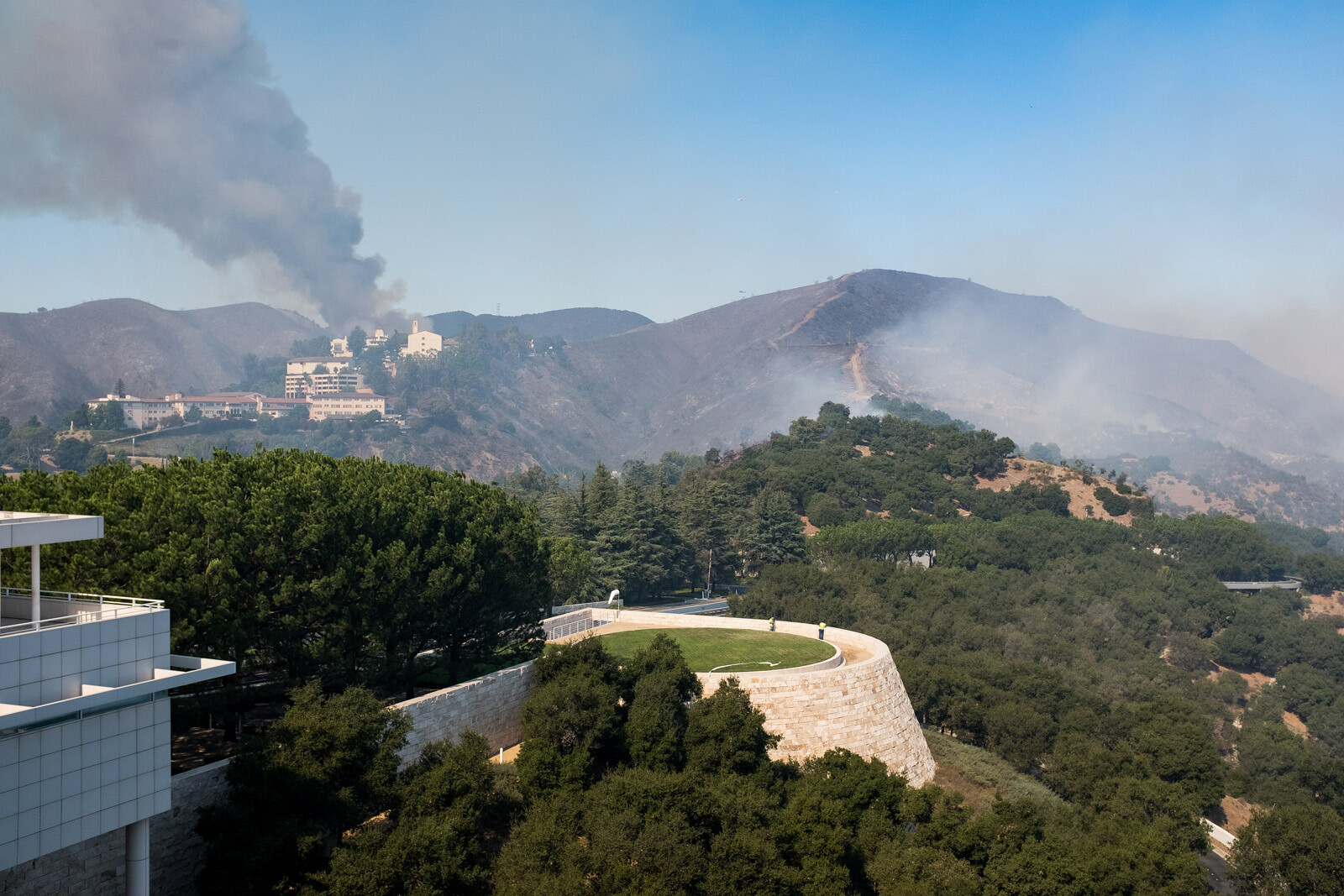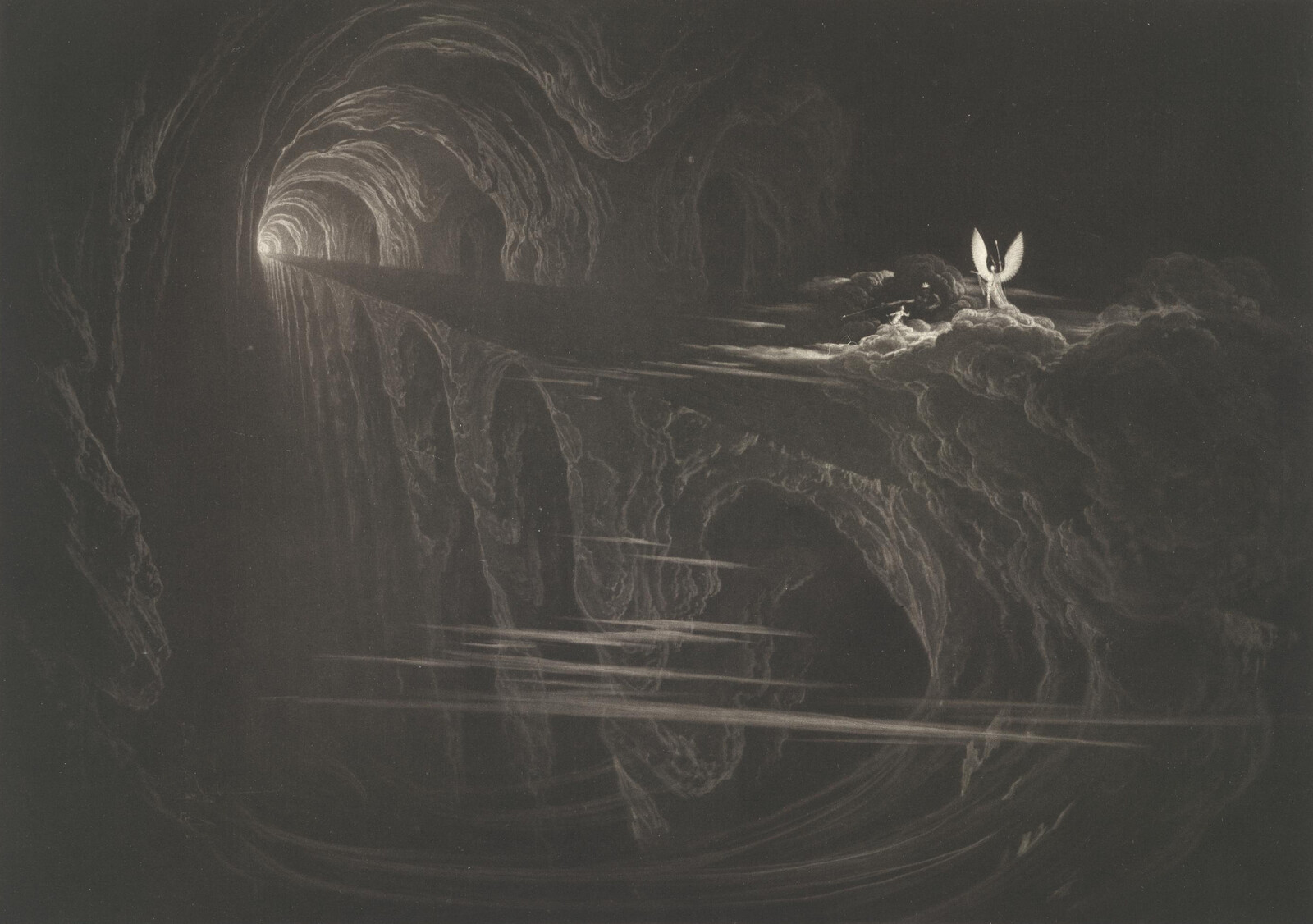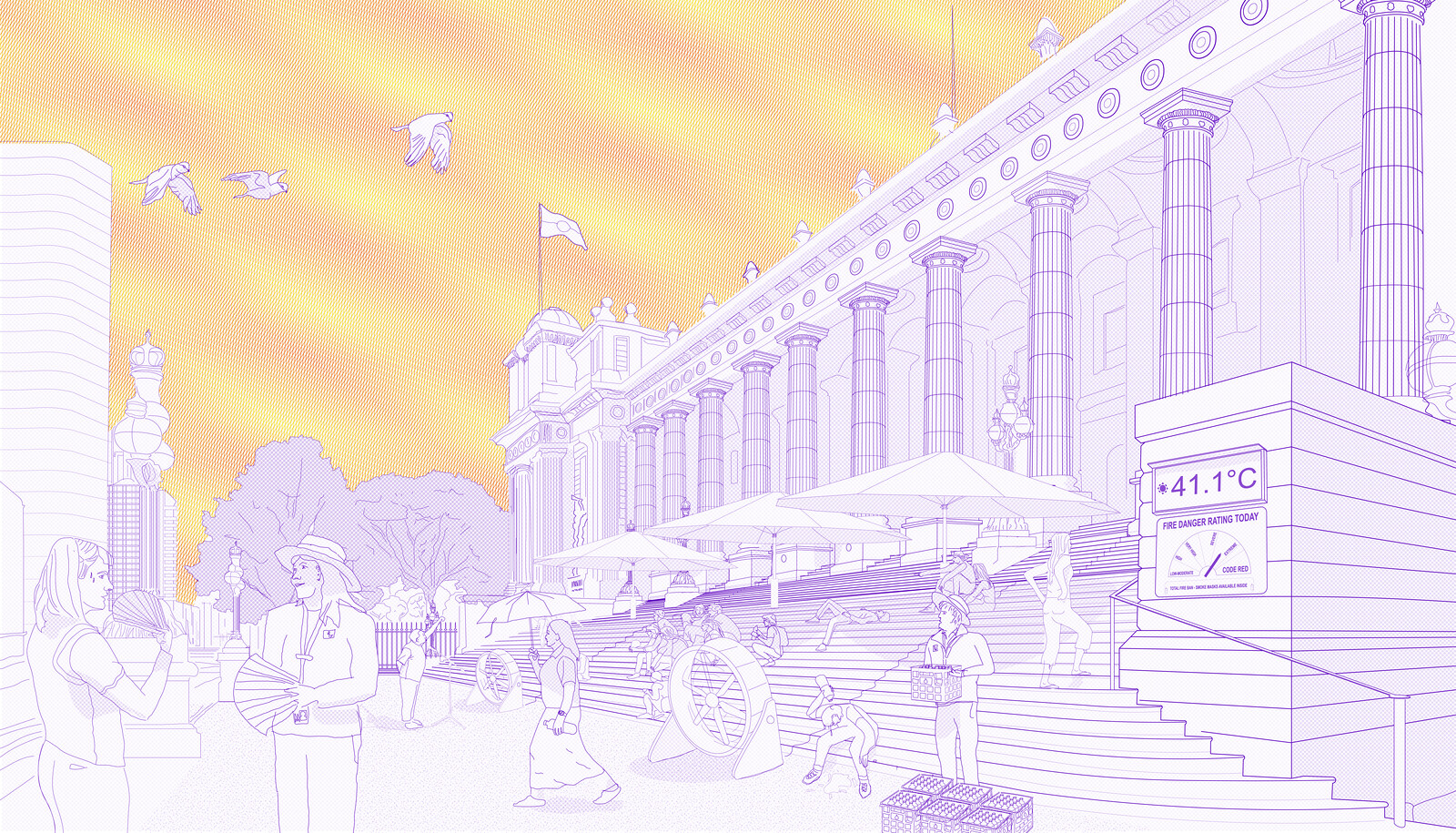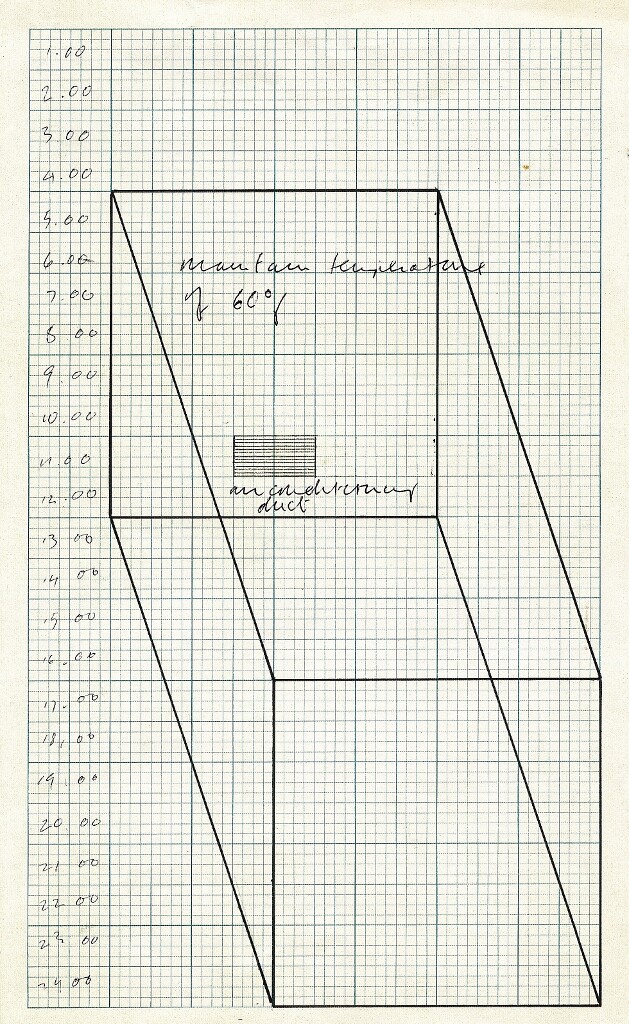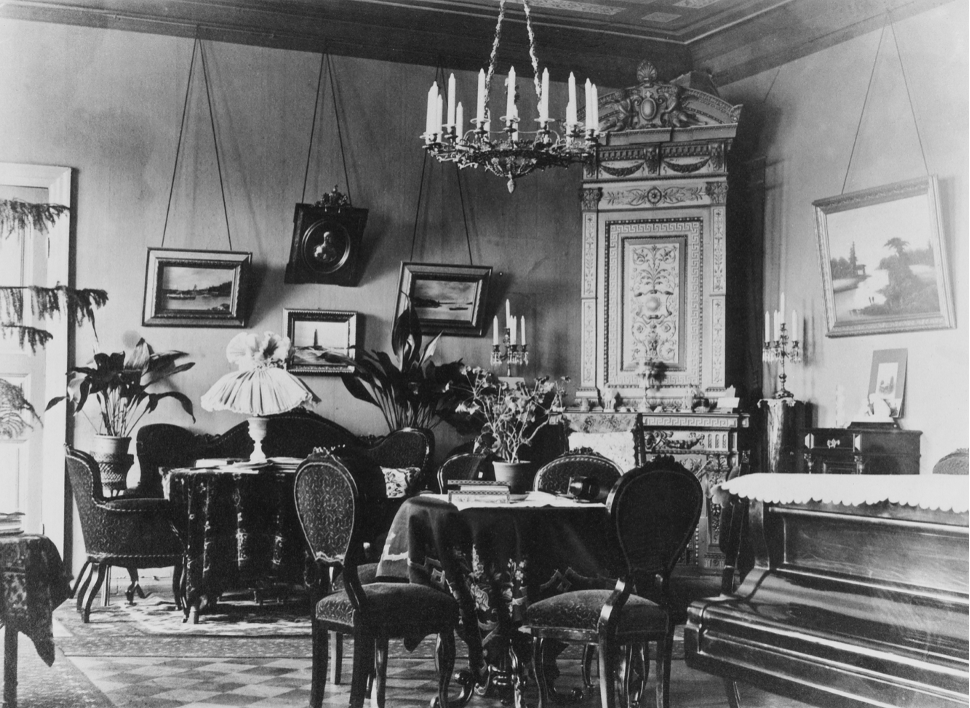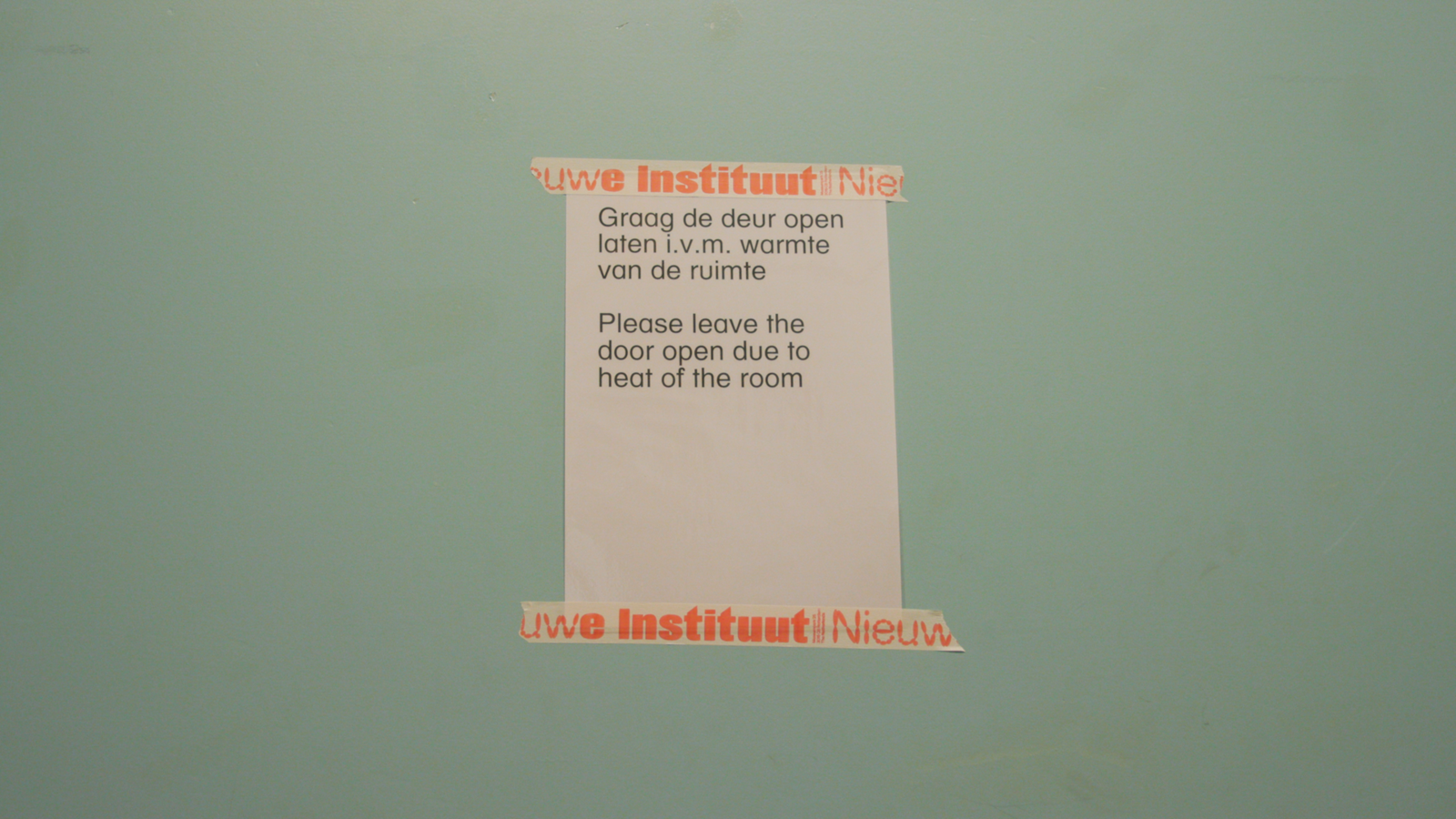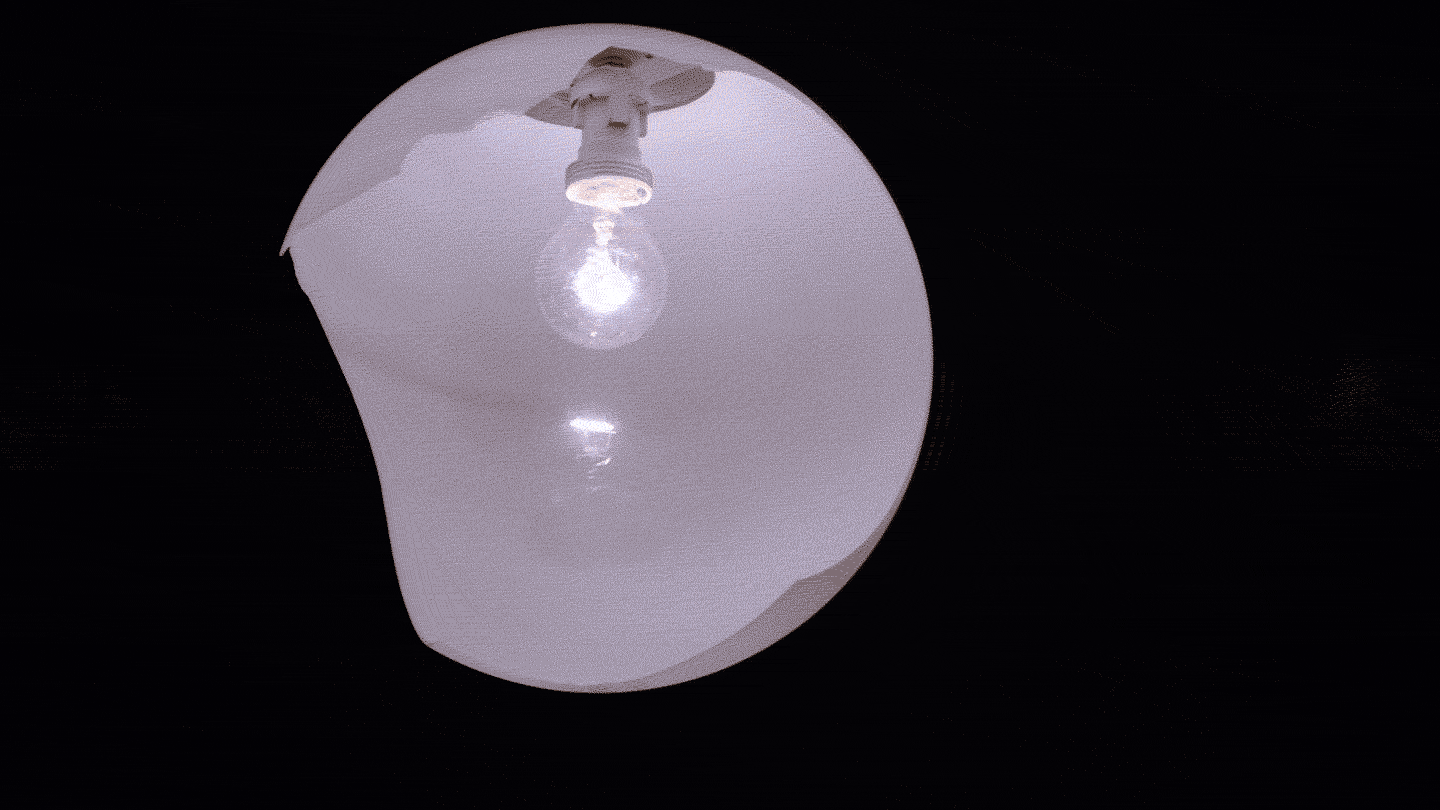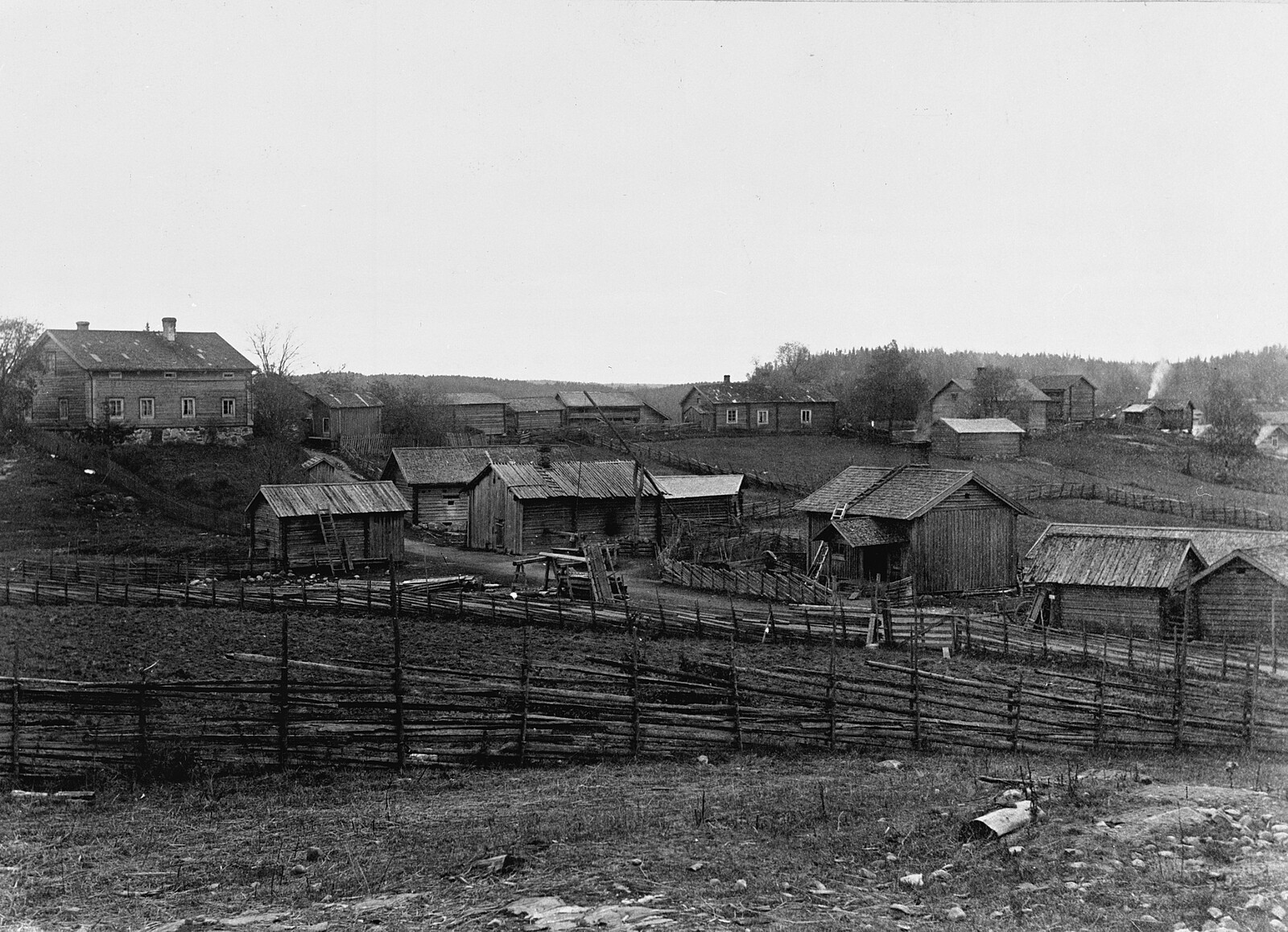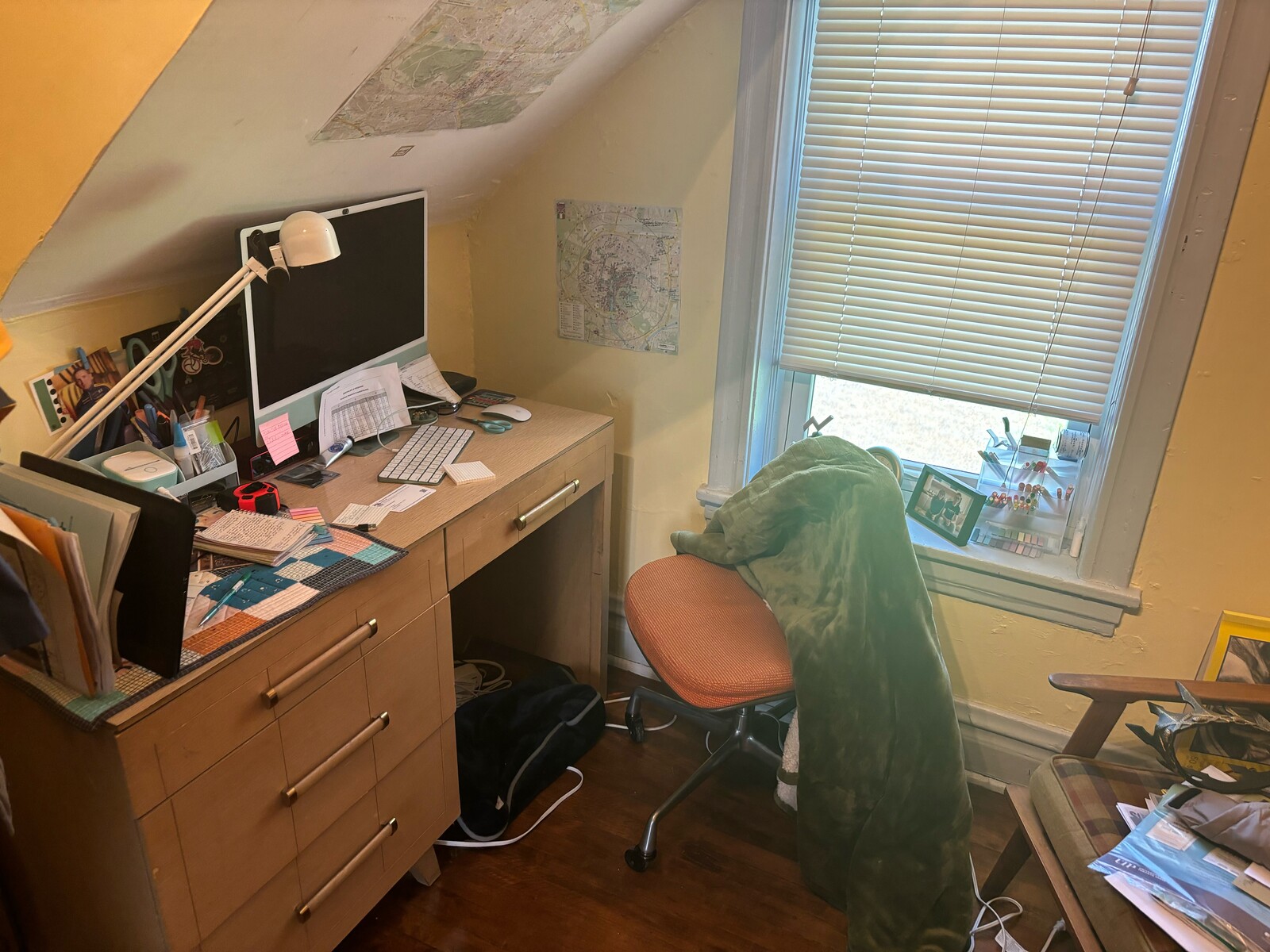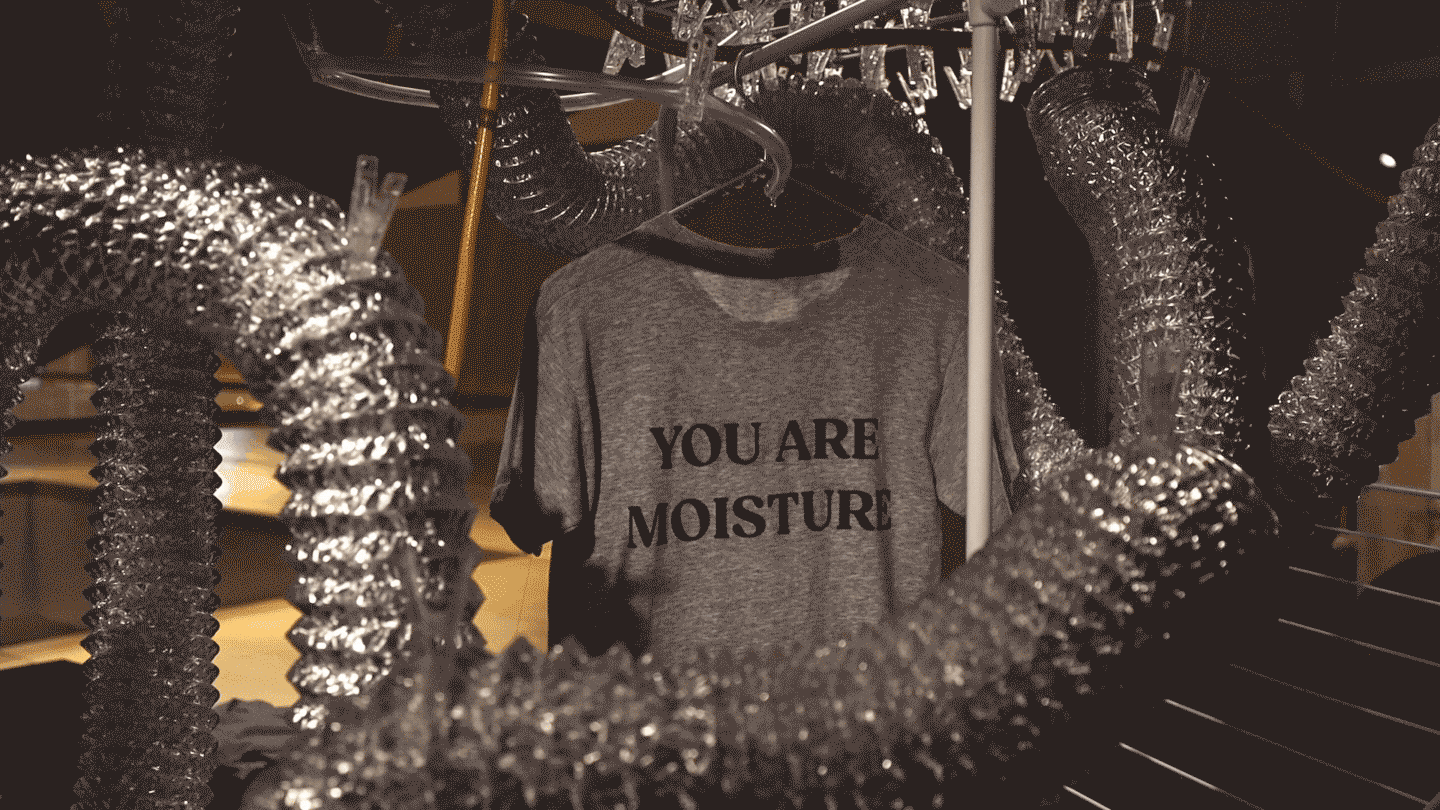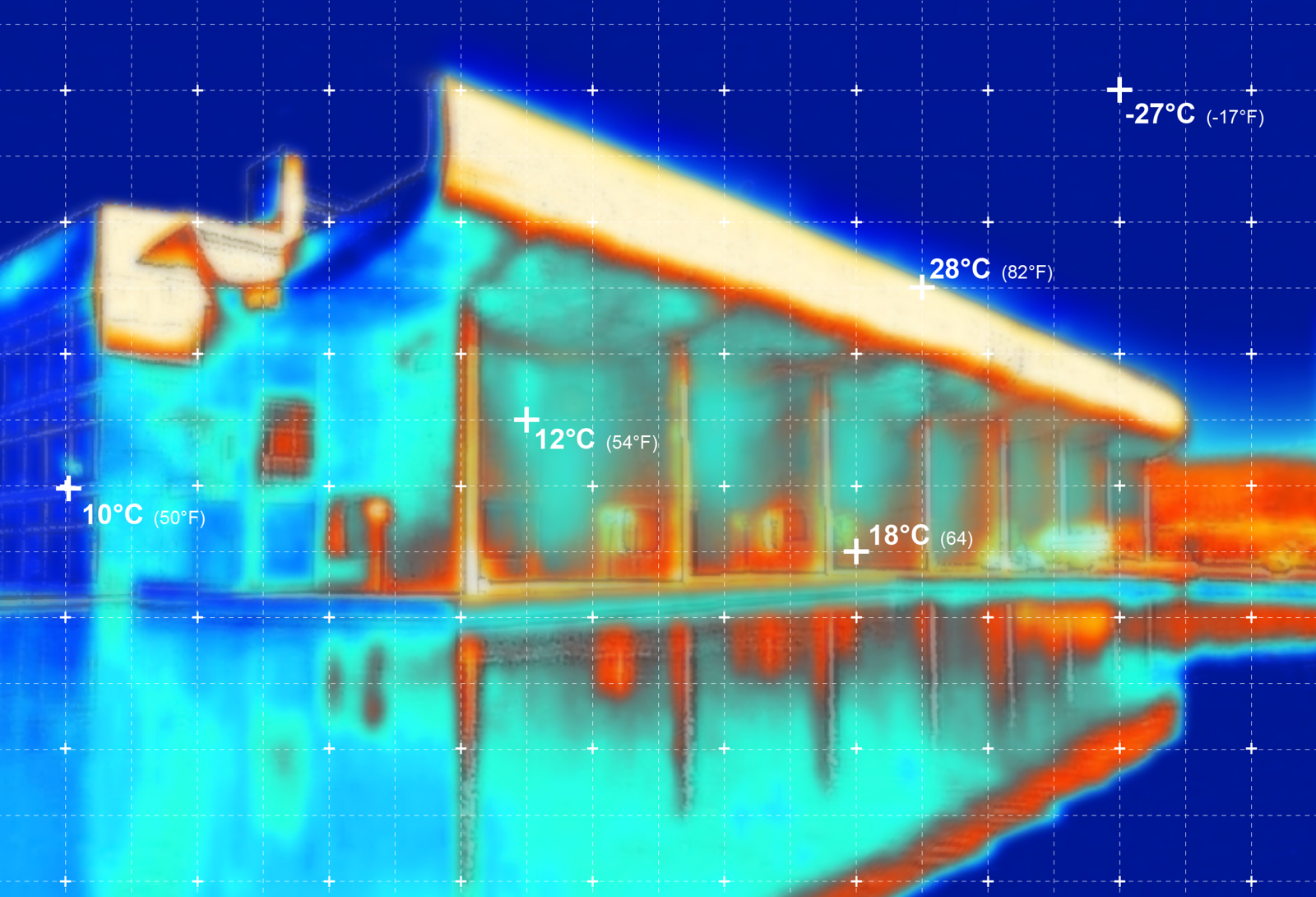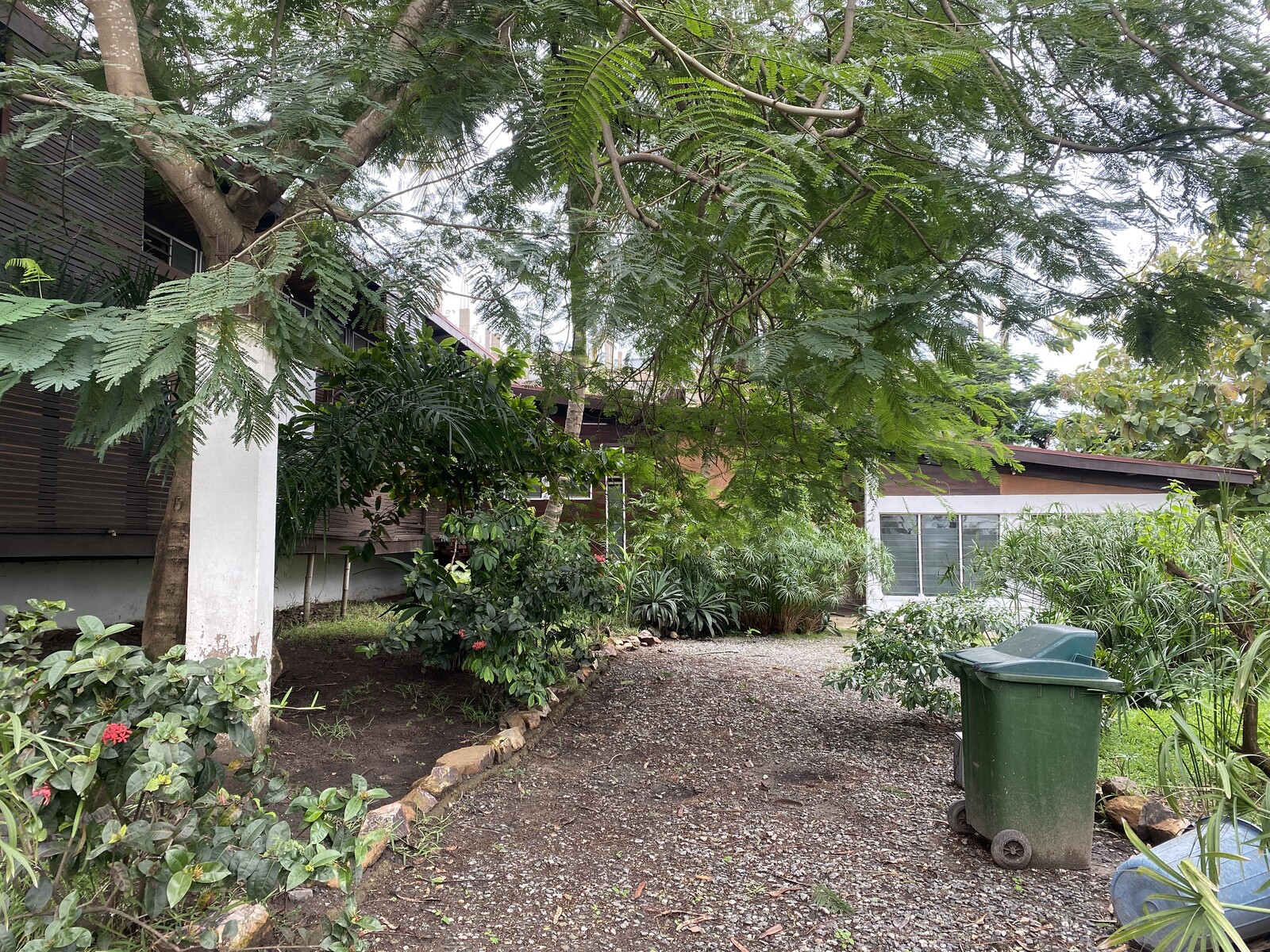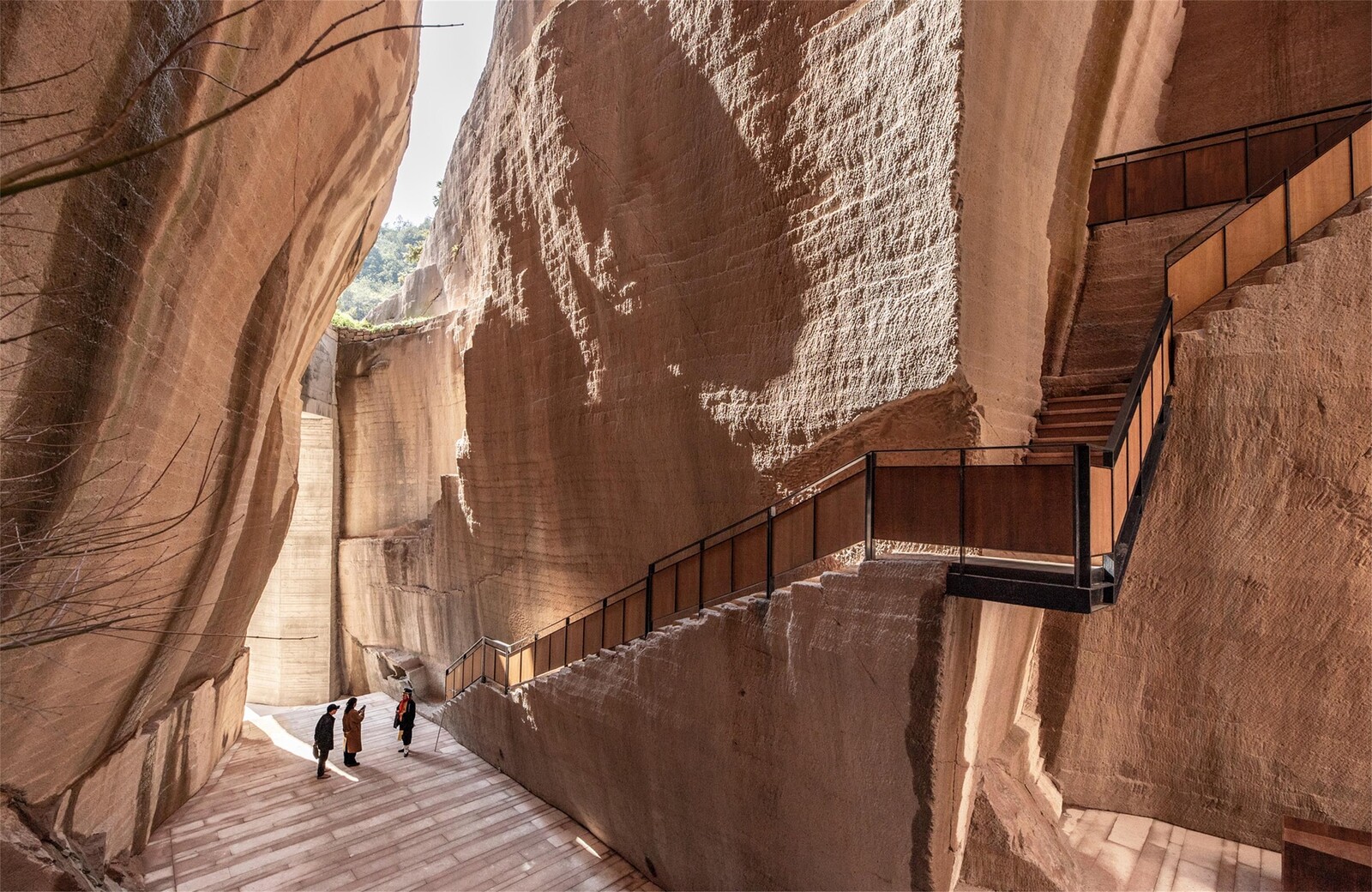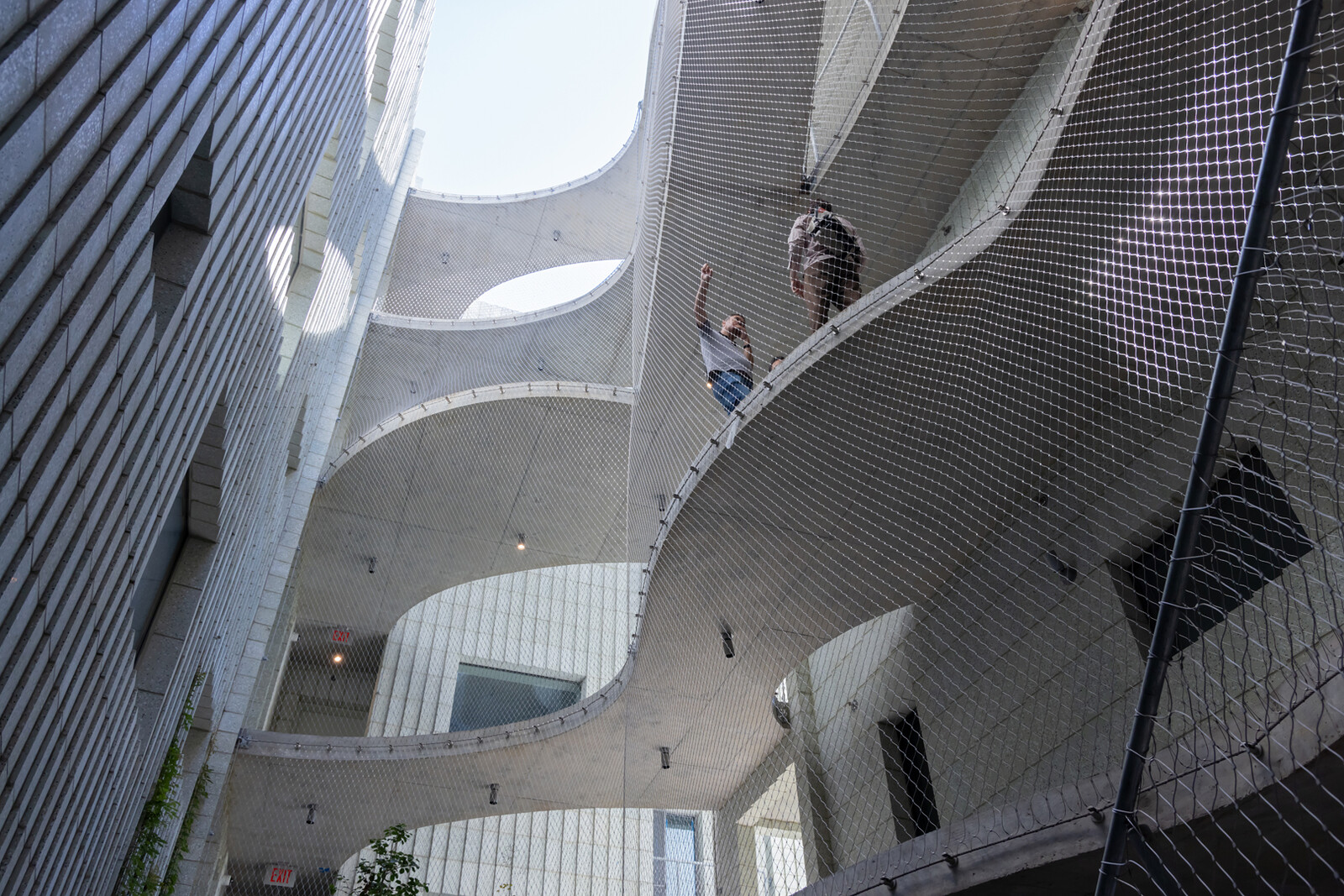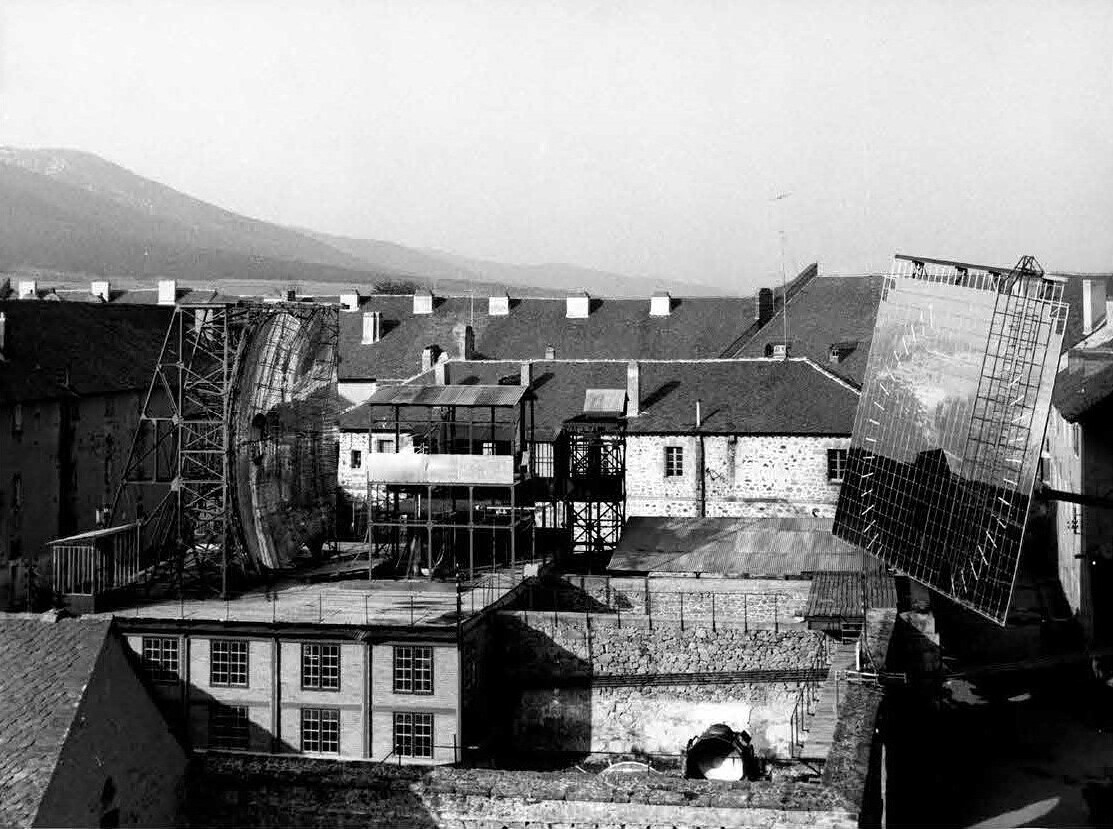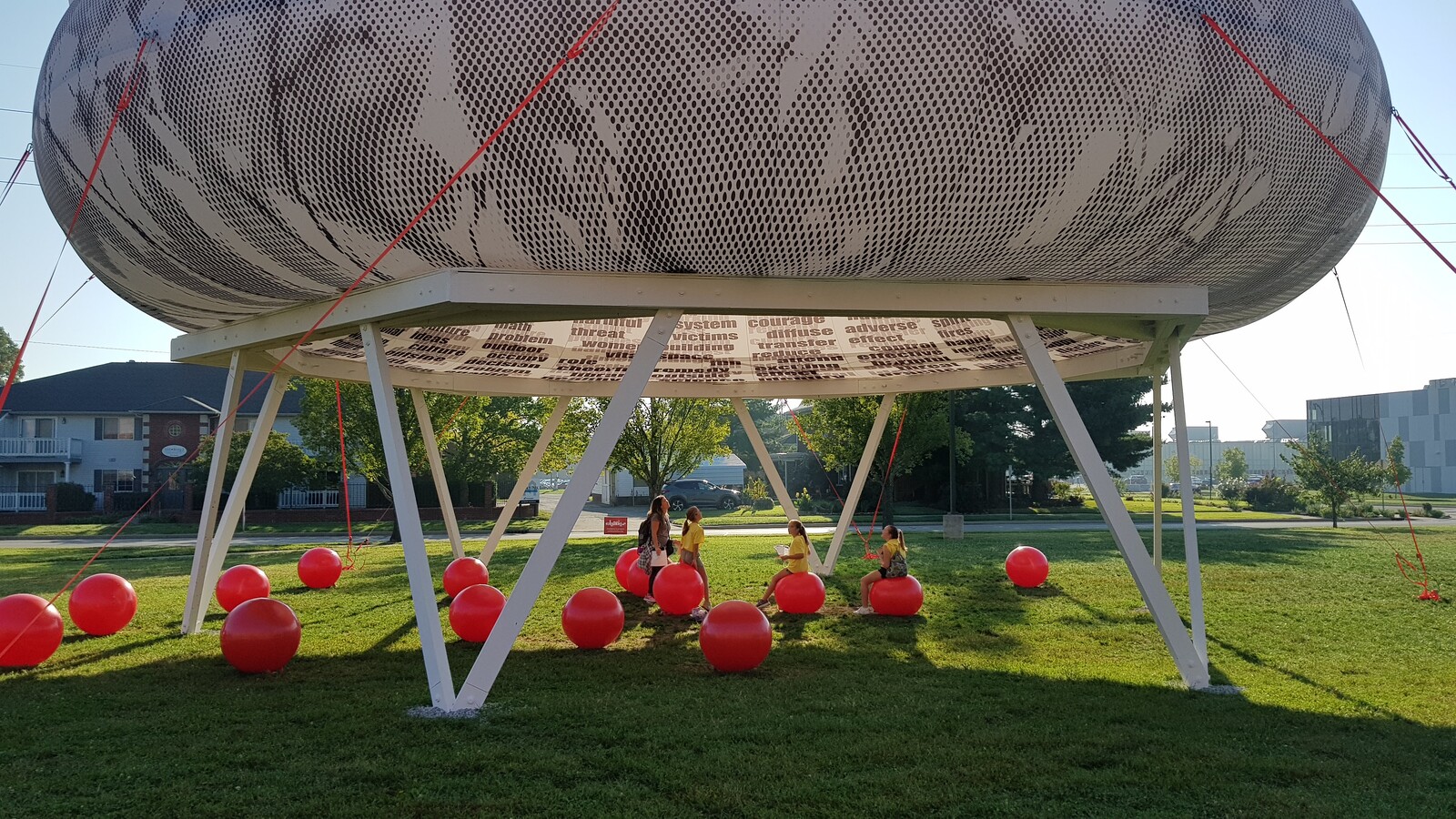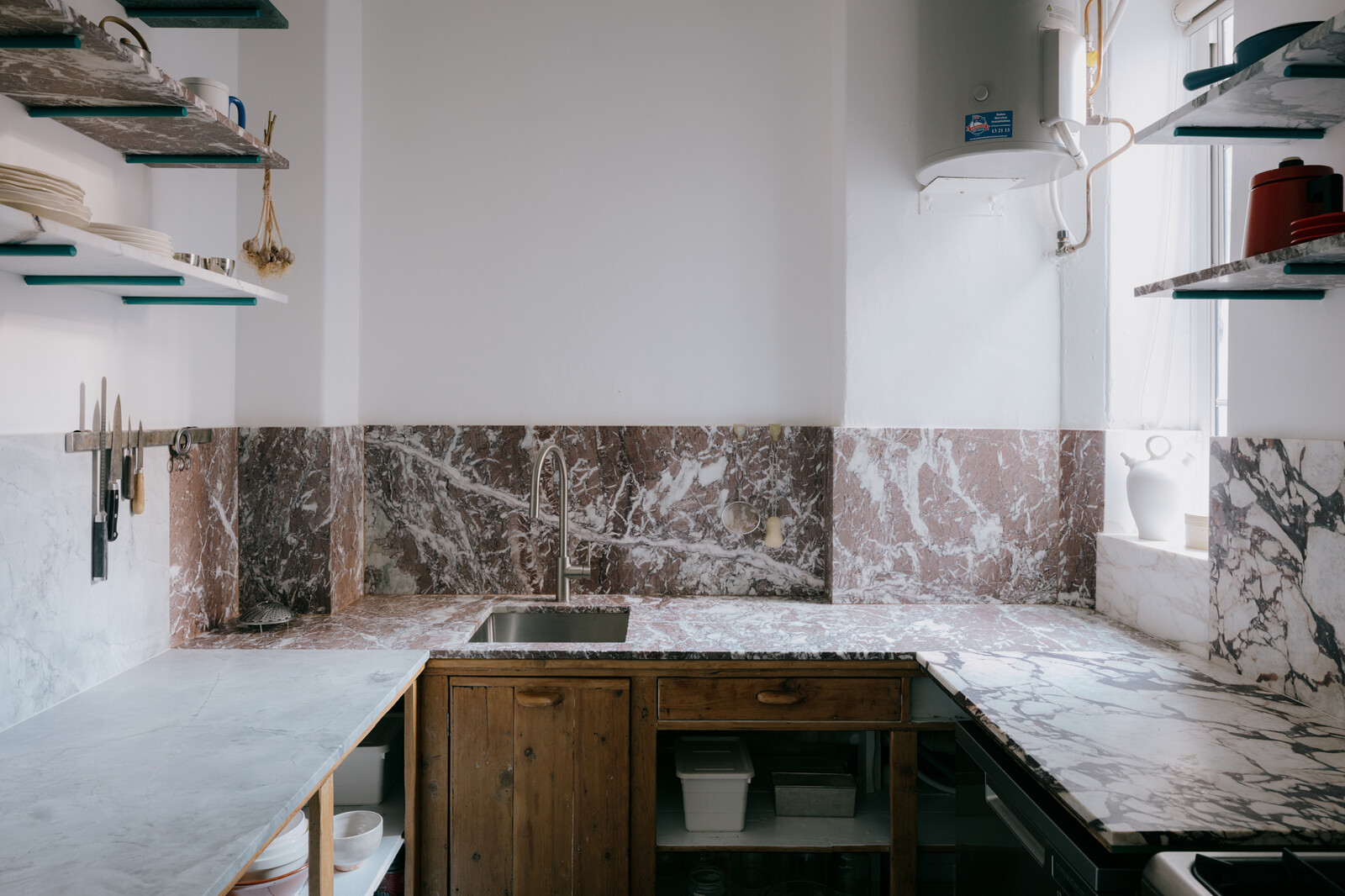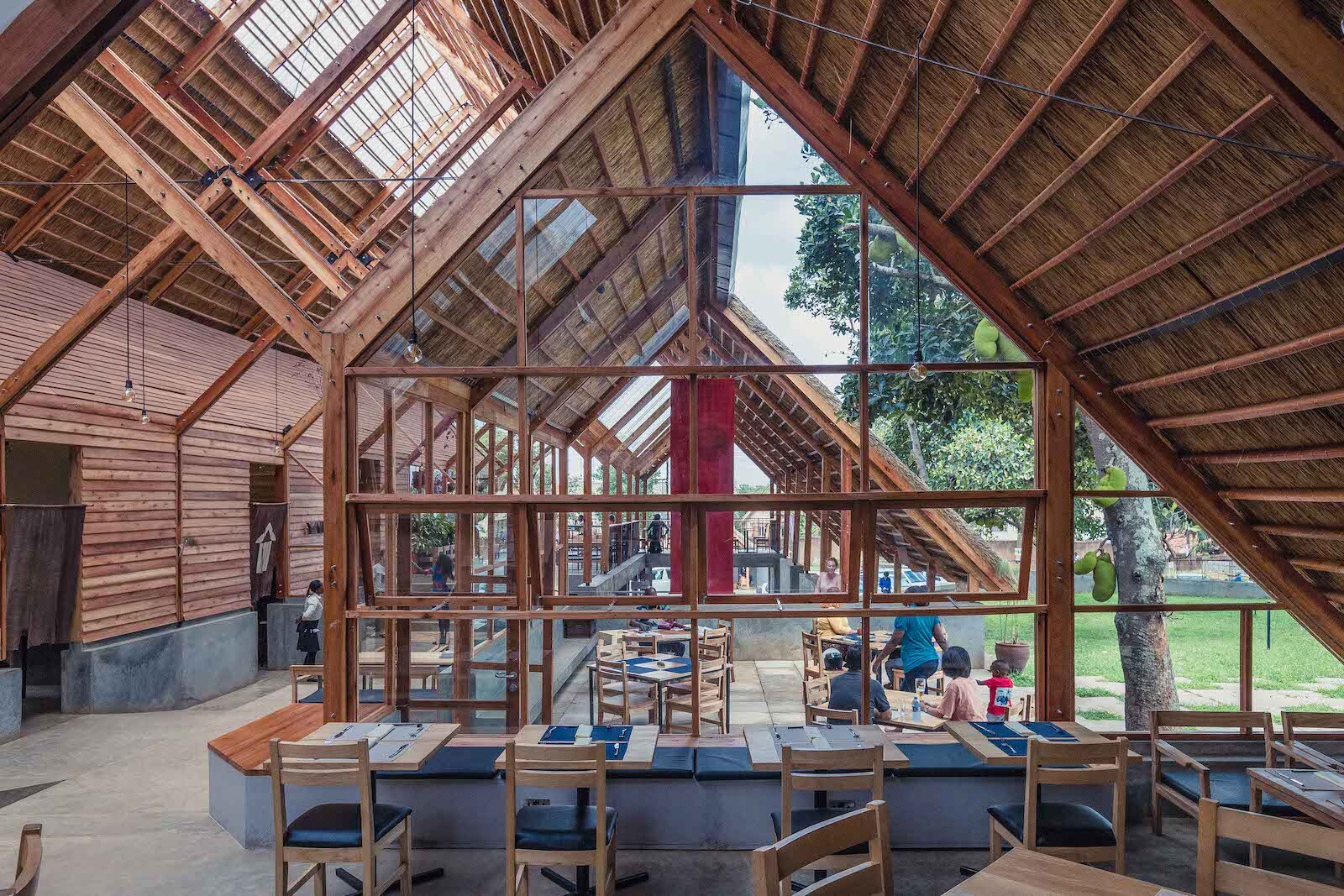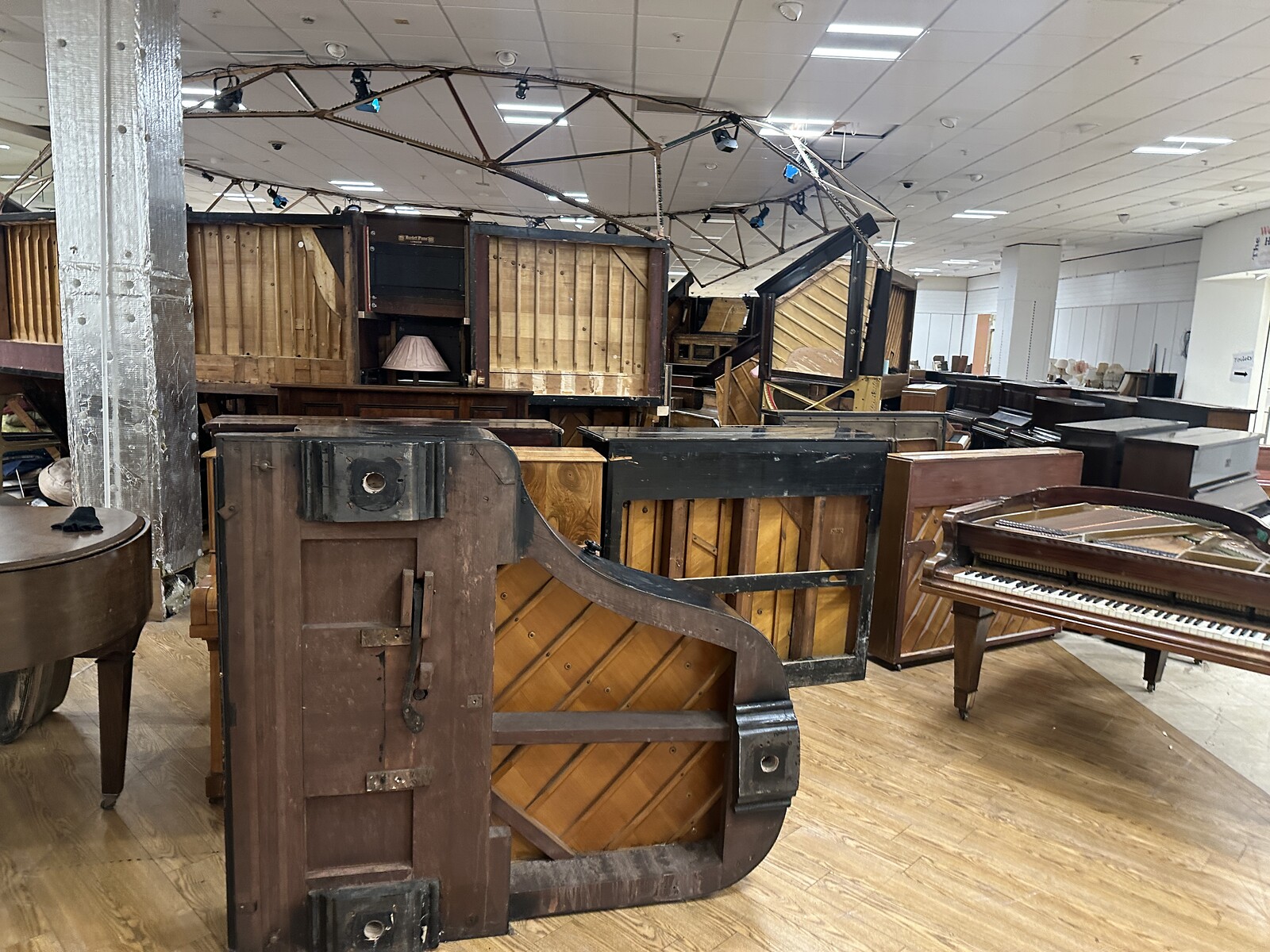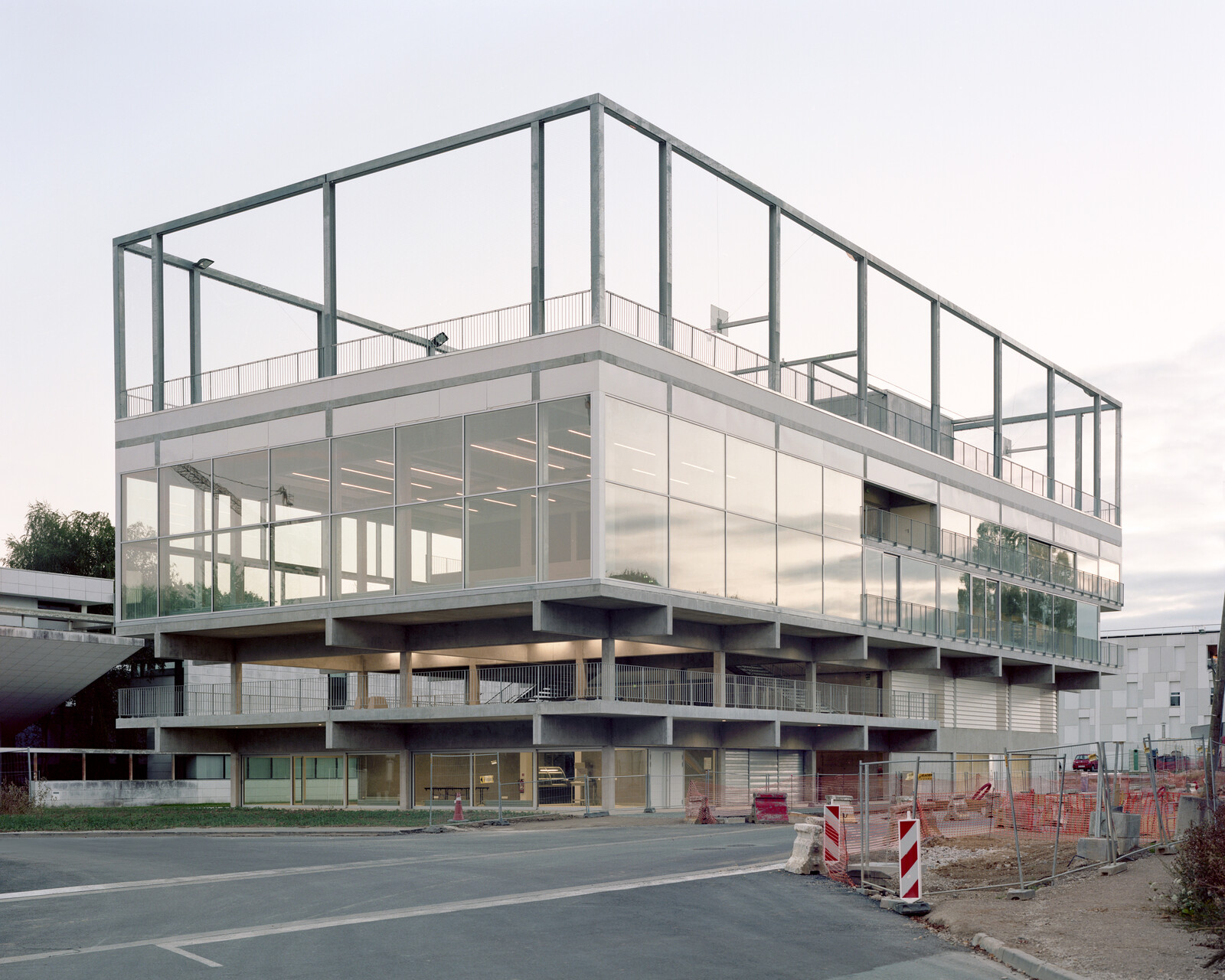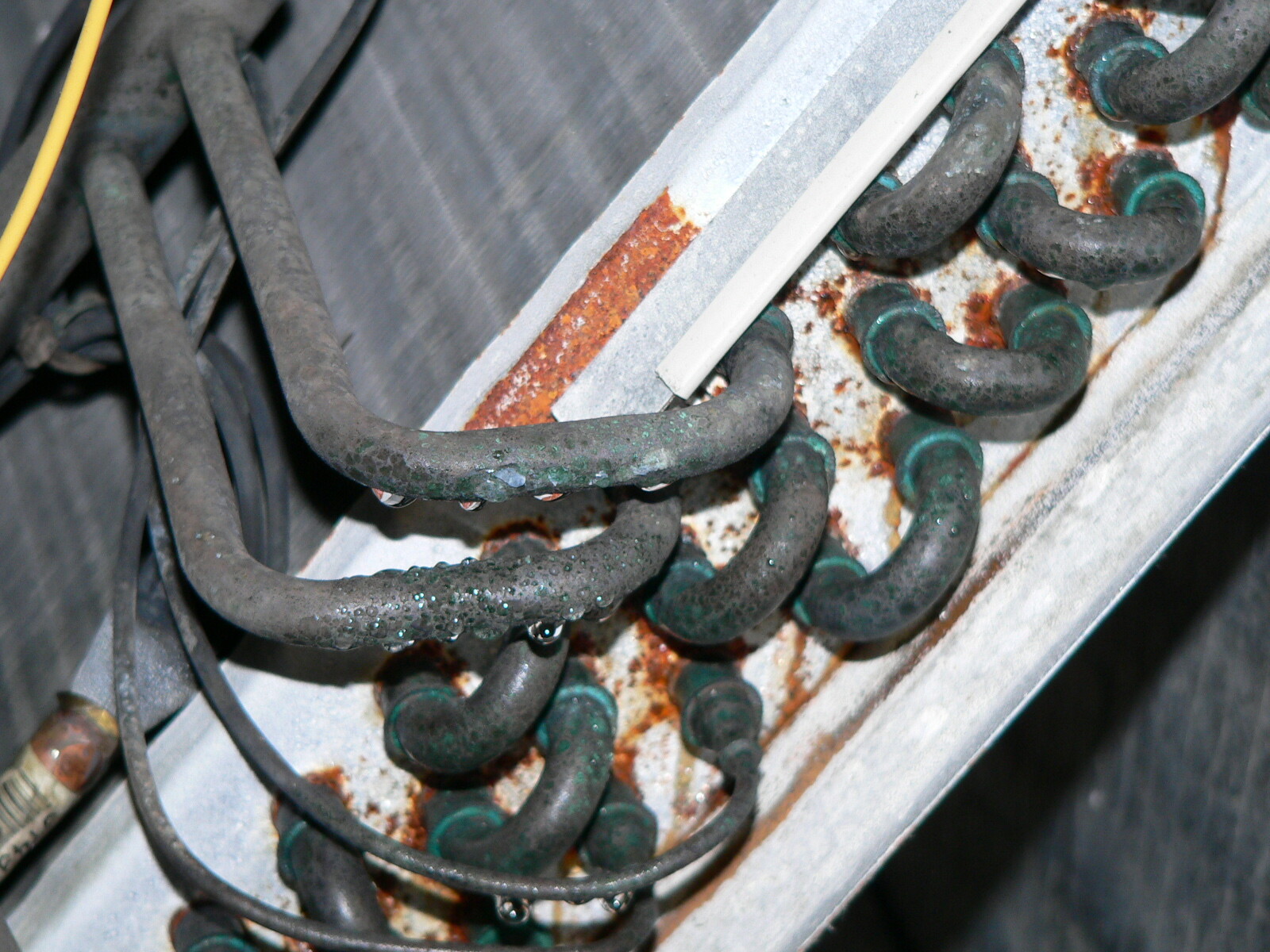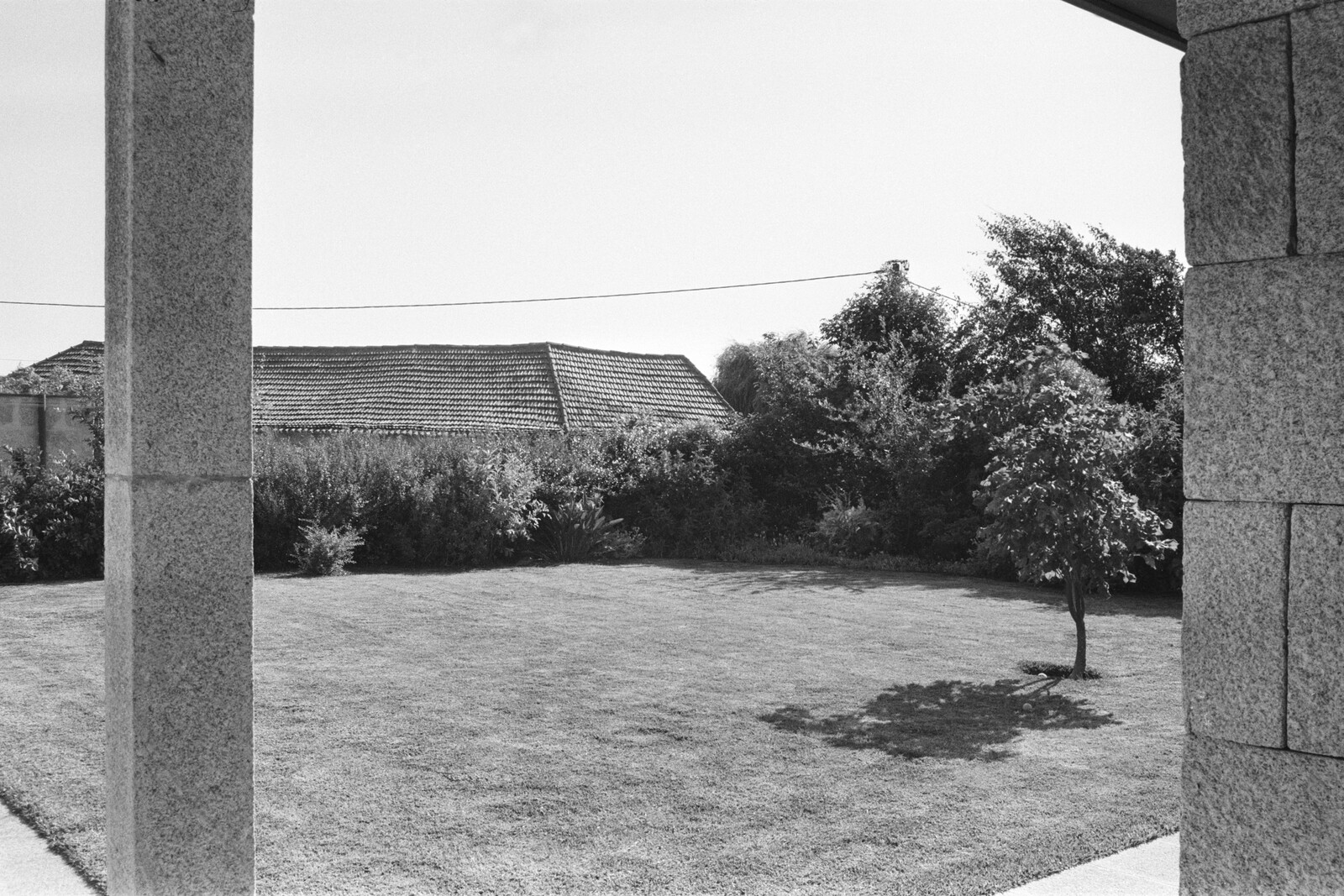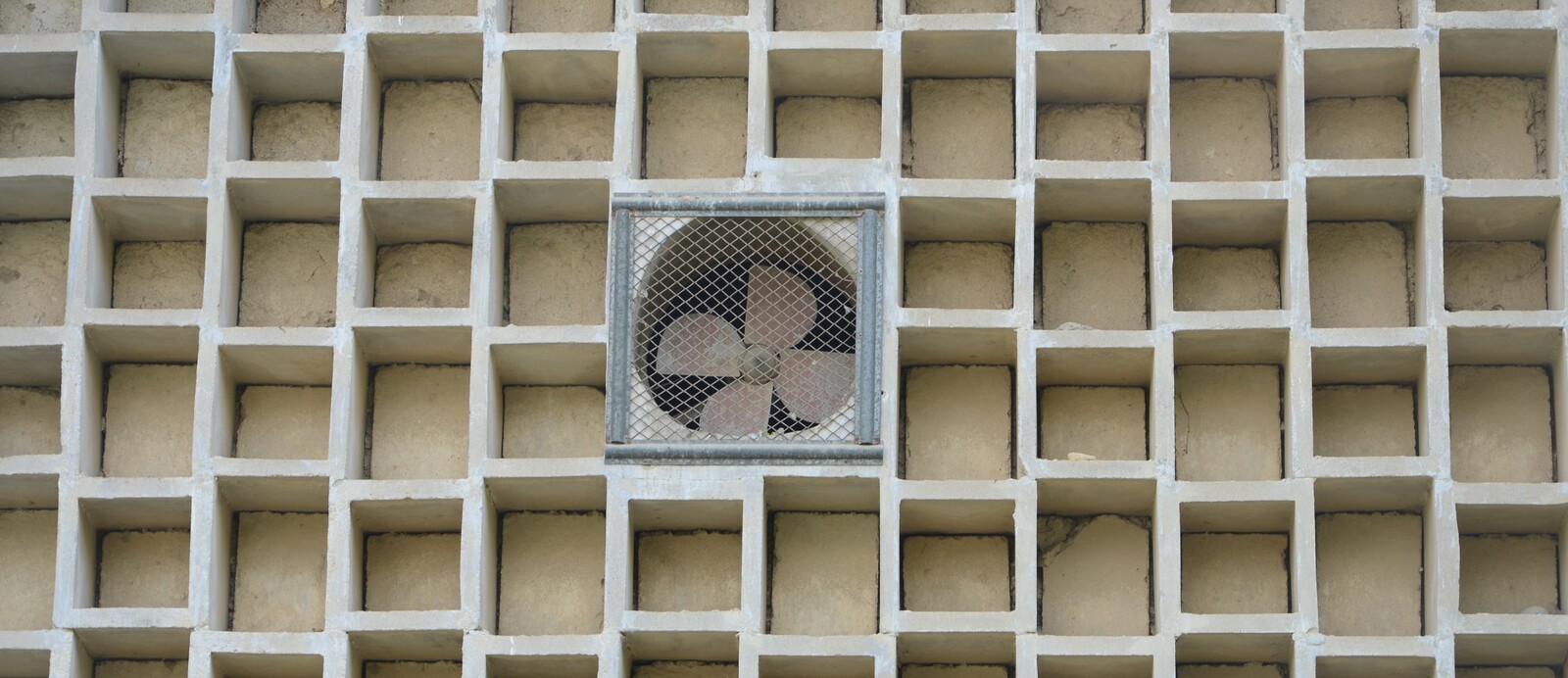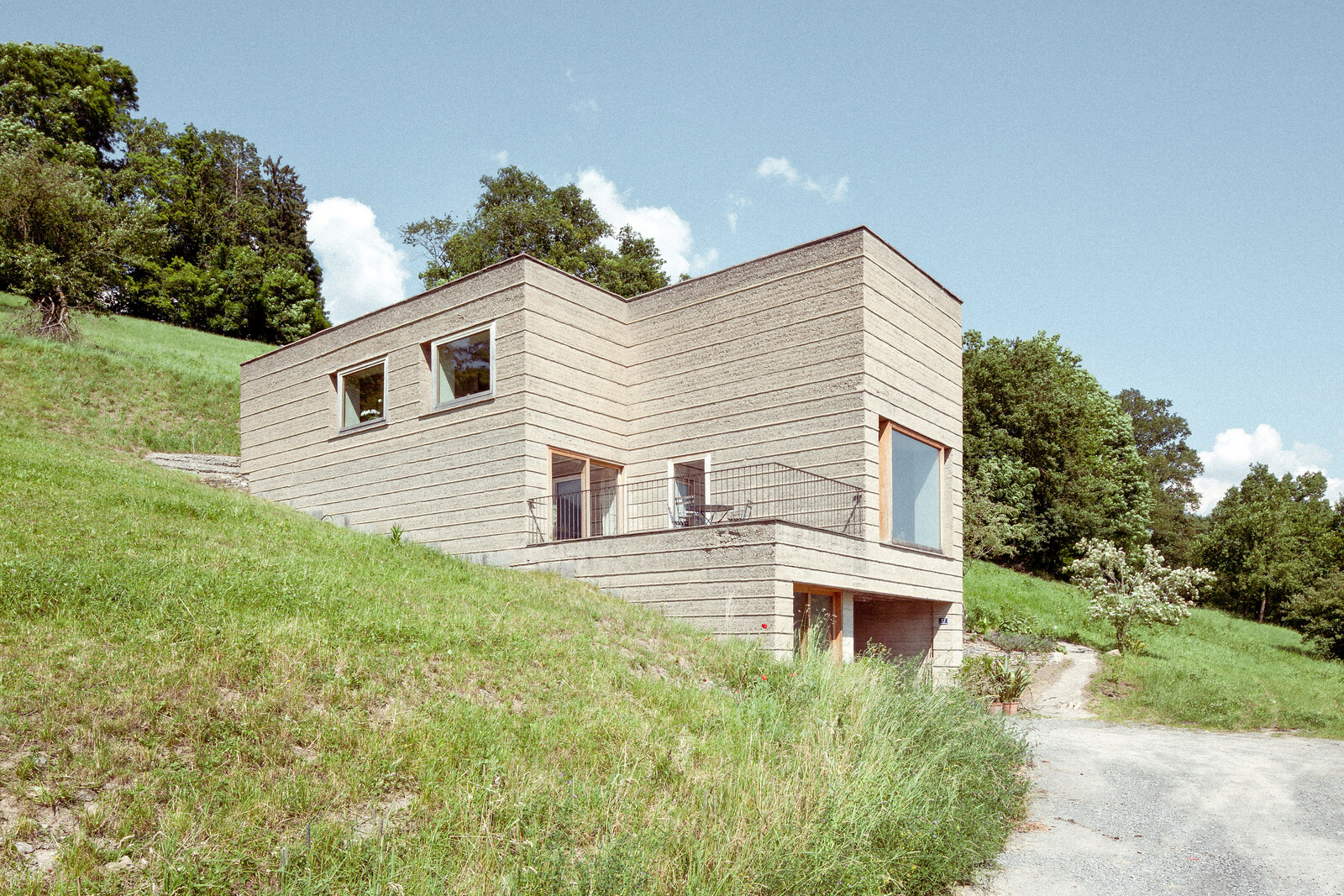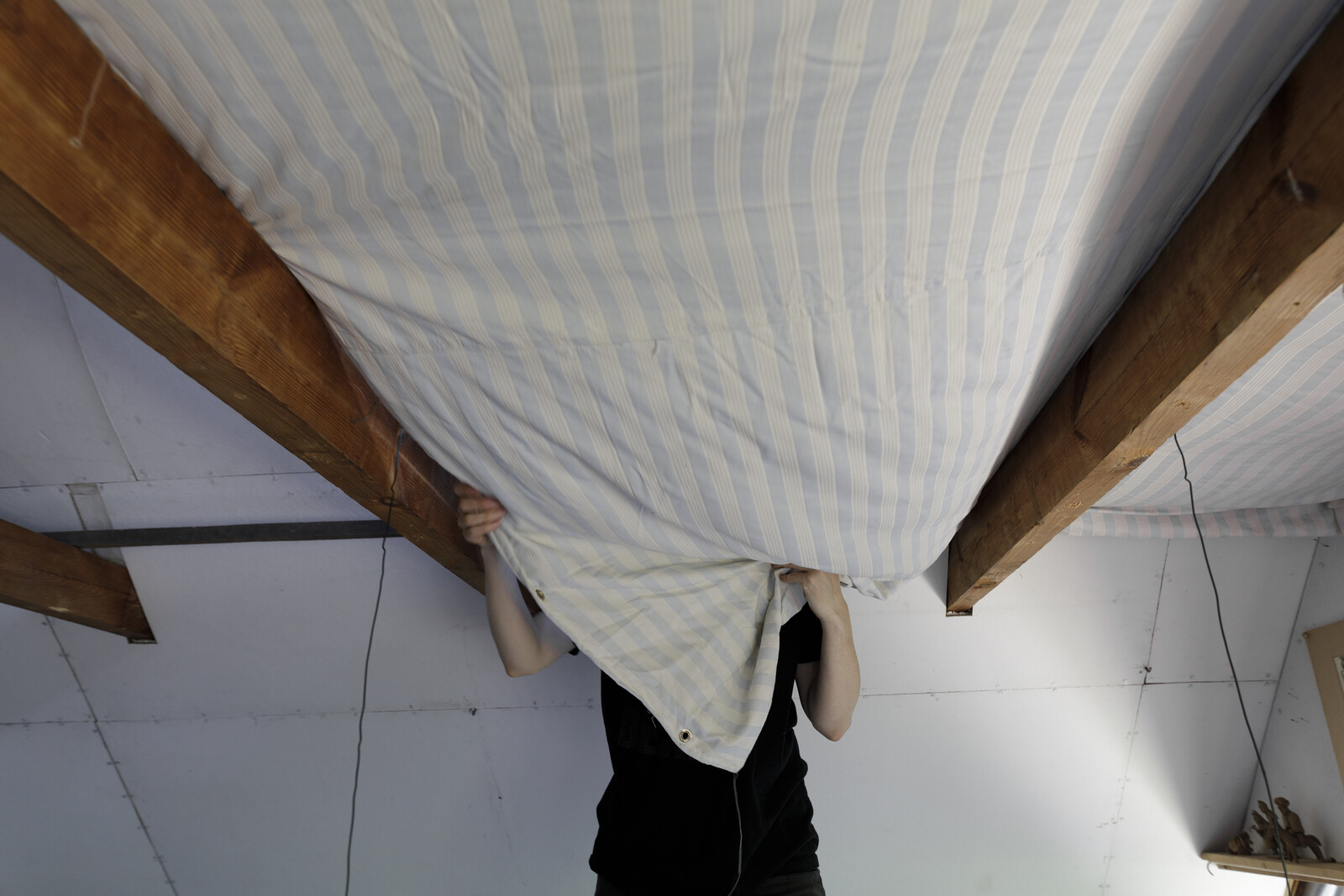To protect things, we put them in containers. A suitable box, on a stable shelf, in a clean and temperate room, in a secure building, on a solid foundation: this is the model preservation environment most institutions want to create for the objects in their care. A diagram from a webinar from the Image Permanence Institute (IPI) represents an artifact snug in a series of nesting boxes. Outside the building lies the museum’s site, and, at the outermost level, the policies and procedures through which museum and archive professionals manage these spaces and boundaries. These “levels of control,” as the diagram calls them, work together, sharing the burden of protection and sometimes taking over for one another. When an artifact travels outside the museum’s walls, registrars and preparators carefully crate it in a container that is strong enough to compensate for a less easily controlled environment. When an artifact forgoes its container entirely to be put on display, the institution must turn its attention to the object’s next most proximate container, the room that holds it. Container, room, building, site, policy: these are a collections worker’s levels of control.1 Put another way, these are the only things they can hope to control. Beyond them lies the world outside, a world no institution can manage. Wars, flood, and fire threaten today’s most vulnerable collections, while better resourced institutions develop ever more pristine and hermetically sealed spaces. Modern art preservation is modeled on the idea that one can—and should—keep the world out.


“Levels of Control,” slide from Kelly McCauley Krish, Jean-Louis Bigourdan, Al Carver-Kubik, “Understanding Fluctuations and Equilibrations” (Image Permanence Institute webinar, May 14, 2020).
But shutting out the world is costly. Fernando Domínguez Rubio suggests that art museums are “some of the most unsustainable buildings on earth.” A museum the size of New York’s Metropolitan Museum of Art, he writes, can consume the same amount of energy as about 10,000 homes.2 This is largely because conventional conservation practice places exacting demands on those mid-tier “levels of control”: the rooms and buildings that hold rare and important things. For decades, museums have built elaborate infrastructures dedicated to maintaining what some call the “ideal” climate for conservation: a stable 68°F (or 20°C) and 50% relative humidity (RH). This “20/50 rule,” as Domínguez Rubio calls it, is practically compulsory for art museums. Written into donation and loan agreements (as well as insurance policies), it has become the “de facto official environment of art.”3 Some institutions permit only a few degrees deviation from this standard; tolerances of five degrees Fahrenheit (±5°F) and two percentage points RH (±2% RH) are common.
“Flatlining”—a term some conservators use to describe this practice of maintaining unchanging temperature and humidity in museum environments—is incredibly energy-intensive.4 Most climate-controlled spaces allow for daily and seasonal fluctuations in temperature and humidity. It feels natural to be a bit warmer on a summer afternoon than on a damp fall morning, and whether through purposeful programming or a mere lack of tight controls, most homes and workplaces allow for such variances. Letting the indoor environment track the outdoor in this way gives HVAC systems less work to do and requires less power. Maintaining a tightly controlled and completely “flat” climate, on the other hand, introduces all kinds of inefficiencies: constant switching on and off, occasional heating in summer and cooling in winter, etc. And museums must not only contend with the contingencies of outside weather: surges and lulls in the number of gallery visitors drive heat and moisture into and out of individual rooms, meaning that different parts of the museum may need to work against one another in their quest to meet at 20/50. The idea that the museum should be a hermetically sealed environment, whose air remains consistent no matter what happens inside or out, drives its energy burn.
By maintaining a flat indoor climate, museums contribute to the climatic instability that rages outside their walls. Compared with heavy industry and new construction—and with the many yearly art fairs and blockbuster exhibitions that send collectors, critics, and visitors on uncountable flights across the globe—the field of collections management may seem a small player in the story of global carbon emissions. But climate change both challenges and illuminates the stakes of collecting and preserving artifacts. Archivists, registrars, preparators, and other collections workers are trained to imagine how their actions may impact an object or a collection decades, even centuries, from now. Much of this training has presumed that the coming centuries will look something like our own: that the future museum will share our built infrastructure and our access to cheap, abundant energy; that the future climate will follow predictable, millennia-old patterns. A generation of collections workers now faces the climate crisis and its uncountable uncertainties. Beyond the museum, managing the current environmental crisis and fostering human flourishing within it will involve negotiating present-day priorities with the needs of an unknowable future. Collections work requires precisely this form of analysis and decision-making. Collections thinking, then, may be essential to imagining art in a post-fossil world.
Sustaining art and cultural heritage in an unstable climate will require collections workers to look past those containers and boundaries they are able to control. Beyond specific geographic sites, policies, and practices, the global climate crisis and its local manifestations will inevitably impact collections. During the 2019 Getty Fire in Los Angeles, as flames licked the sides of Interstate 405, the Getty Center assured the public that its storage facilities were the safest possible place for artworks to be during a wildfire. A story posted to their site described the care and caution woven into every aspect of the center’s design, from its fire-resistant landscaping to its thick stone walls to its indoor air purification systems.5 Yet few institutions command such resources. And even an impenetrable fortress on a hill could fall quickly into disrepair if there were no human beings able to care for it. The outside world, in short, is coming. It will inevitably impinge on those protected spaces designed to keep it out. What would it mean, then, for museums and archives—if ever so slowly, consciously, and deliberately—to let the world in?
Since the 1990s, conservators have argued that artifacts can tolerate far greater climatic fluctuations than previous decades had taught. The Image Permanence Institute, along with institutions such as University College London’s Institute for Sustainable Heritage, the Getty Conservation Institute, and dozens of others have started to advocate for more flexible climatic standards and more sustainable ways of achieving them. The Guggenheim Museum Bilbao and the Rijksmuseum recently made headlines for loosening their indoor climate controls to decrease their energy use.6 During the second half of the twentieth century, climate control played a key role in the field of “preventative conservation”—that is, the development of methods for preventing damage or decay before they start. In recent decades, conservation science has become more attentive to AC’s environmental costs; the field has, in the words of Sarah Staniforth, “followed a somewhat circular path” as researchers study and advocate for pre-AC methods of environmental control.7 Arguing for what she calls “slow conservation,” Staniforth has encouraged European and North American conservators to study historical techniques as well as the practices of colleagues in the Global South, where financial and infrastructural constraints prevented many institutions from adopting the 20/50 standard. Many artworks and artifacts have, after all, survived centuries without air conditioning. And many will live on long after museums are no longer willing or able to mechanically control their indoor atmospheres.
Perhaps the regime of 20/50 will soon prove to be a strange aberration, a blip on the historical record. A historical view of air conditioning’s integration into the museum, along with a deeper understanding of twenty-first century conservation research, suggests that flatlining and standards like 20/50 emerged not because of their empirical validity, but from a confluence of factors: the formalization of conservation science, the development of air conditioning, the emergence of the “white cube” exhibition space, and the transformed material nature of the art object itself. Other phenomena (for instance, the securitization of artworks through insurance; the treatment of artworks themselves as financial securities; the speed and ubiquity of air travel, which in turn drives the constant borrowing and lending of artworks; and a donor class more eager to fund glittering new buildings than to expand or even maintain collections staff, let alone pay them adequately) have surely contributed equally to the 20/50 regime. But these four phenomena—what we might call an “AC-conservation-exhibition-artwork” complex—are so deeply entangled, so mutually interdependent, that we can only understand them in relation to one another. Doing so suggests how we might disentangle them and think beyond flatlining to imagine less energy-intensive conservation practices.
How to Flatten the Air
Western techno-science’s approach to art conservation came of age amid the two World Wars. As World War II’s aerial bombardment campaigns threatened museum structures, many institutions stored objects off-site and underground. Even New York’s Metropolitan Museum of Art removed its collection to a secret inland site for fear of air raids reaching US shores.8 A vast, unplanned, and uncontrolled experiment thus commenced as collections workers recorded how objects adapted to new environments. For several years, London’s National Gallery housed most of its collection in storage huts at a slate quarry in Wales, chosen because its remote location and depth would protect the artifacts from bombs.9 The Manod Quarry appealed to National Gallery staff not only because of its proprietors, who were “courteous and anxious to help,” but also because the underground climate was remarkably consistent: 47°F, day and night, in all seasons.10 A simple heating system was sufficient to warm and dehumidify the structures without specialized equipment.11 On-site staff carefully monitored the storage climate and the works’ condition, and soon found that the cracks, blisters, and fading they expected did not appear. In London, one technician had regularly touched up paintings that suffered when the gallery’s heating system caused extremely dry air. But in Wales, the technician had almost nothing to do. After the war, the National Gallery’s “Weaver Report” cited this incident as proof that the huts’ specific atmospheric conditions were the most advantageous possible environment for the conservation of artworks.12 They suggested a year-round climate of 70°F and 50% RH; only a few degrees off from 20/50.
Thus “the mindset for the next forty years was largely established,” write conservation scholars J.P. Brown and William P. Rose. Over the next decades, journal articles, handbooks, and training programs all proposed standards that hovered somewhere in the realm of 20/50 for artworks, with modified targets appearing for other collection types.13 But more than any specific set of numbers, crucial to the postwar vision of the museum environment was the idea that the indoor climate should remain as stable and unchanging—as flat—as possible.


Hygrothermograph, Old Courthouse, Gateway Arch and Jefferson National Expansion Memorial. Source: US National Parks Service.
“Flatlining” extended a commonsense idea about preservation—that change is bad—beyond the borders of the object to its surrounding environment. The 1960 issue of the journal Museum, published in English and French by UNESCO, was entirely devoted to “museum climatology.” Defining climatology at large as “the study of climate and its causes in relation to a particular region,” conservators Paul Philippot and H.J. Plenderlith argue that the museum climatologist should study “those conditions which together create the climate within a museum,” with the end goal of finding “the optimum conditions of the atmosphere for good conservation.”14 The fifty-page study presents data gathered from five “comparable” museums in different climates and compares hard measurements with curators’ qualitative assessments of display and storage conditions. It also addresses an international audience of museum professionals with general guidance on the museum environment. Almost every change in the air, the authors explain, provokes a corresponding set of changes in the objects it surrounds: artworks and artifacts “live and breathe” with their environment.15 Wood and paper swell with humidity, while canvas tightens; some paints soften and stretch in the heat or damp, while others stay rigid on top of their restless, ever-changing surfaces.16 On a day-to-day basis, such changes are scarcely perceptible. Yet these “micro-changes,” according to Philippot and Plenderleith, accumulate over time as damage:
Every object tends to adjust itself in such a manner that it is in physico-chemical equilibrium with its environment. Every variation in the condition of this environment destroys the equilibrium and provokes from the object a response which may vary from a slight correction to a serious adjustment, of such a nature indeed as to be catastrophic … Even minor variations of museum atmosphere provoke restlessness, particularly in hygroscopic substances such as wood, leather, and paper. Though smaller in degree the effects of these oscillations are similar in principle and their gravity cannot but become more intense with time as the material fabric becomes weakened and less able to adjust itself without rupture.17
The number of absolutes in the passage above is striking. The report suggests that any and all atmospheric variation leads inevitably to the disintegration of any object, given enough time. A minor change that is harmless the first, second, or hundredth time will, after enough cycles, eventually cause harm. Many of the authors’ peers shared this view. National Gallery conservators T.R. Keeley and Ian Rawlins (the latter of whom presided over the wartime storage quarry in Wales) compared the mechanical “fatigue” objects accumulate from small equilibrations to the inevitable breakdown of “reciprocating machinery” in factories.18 Nearly two decades later, similar statements animated authoritative guidebooks such as Gary Thompson’s Museum Environment (1978) and the American Association of Museums’ Museum Registration Methods (1979). The latter cautions that the importance of maintaining a “constant” RH “cannot be overstated.” “The forces involved are great, and the effects may be serious.”19 A consistent environment, many hoped, might ensure an unchanging object.
Present-day conservation scientists have marveled at the lack of hard evidence behind these recommendations.20 For centuries, collectors, caretakers, librarians, and others who tended to aging objects have understood that extreme conditions—too hot or cold, too wet or dry—invite mold, pests, fading, and decay. Collecting intuitions benefitted massively from the work of conservation scientists who, starting in the late nineteenth century, incorporated emerging knowledge in organic chemistry, materials science, and hygrometry into their practice. Yet the postwar consensus on flatlining drew on evidence that was anecdotal at best. Indeed, the tale of the Welsh quarry’s storage huts appears in many publications as entirely sufficient to justify rigorous climate control. It was easy for collections workers to accept that if extreme heat or damp could trigger dramatic changes in objects, then smaller climatic variations must change them more subtly. Postwar faith in technological progress undoubtedly encouraged many individuals and institutions to believe that what can be controlled, ought to be—and that if some control was good, more control was better. Cheap energy and a lack of knowledge or concern for the long-term effects of its ubiquitous use also made it easy for many in research, industry, and even cultural work to presume that control was a matter not of finesse, but of brute force. The 20/50 regime grew from the notion that true mastery over materials was not an exercise in knowledge and experience, but the application of raw power.


Photograph of a gallery in the Boston Museum of Fine Arts from 1915 which shows a vent on the lower wall. Source: The Metropolitan Museum of Art Bulletin 10, no. 3 (March, 1915).
The Cost of Containment
Air conditioning emerged alongside the strict museum environmental standards it made possible. Modern AC—the electrically powered depression of dew point for the purpose of indoor climate control—dates to the first decade of the twentieth century. Initially developed for the management of hygroscopic materials in industries such as printing and textiles, AC allowed factories to increase mechanization and production speed.21 In 1908, John McCabe installed a humidification and air washing system in the Boston Museum of Fine Arts, and in 1939 the Museum of Modern Art’s new building incorporated air-conditioned galleries.22 By the late 1940s, wartime innovations in electronics and dehumidification had made air conditioning far more affordable, and the Weaver Report’s 1947 recommendation of 70°F and 50% RH conveniently coincided with the conditions that AC promised to deliver.23 As if by some happy accident, AC and scientific conservation grew to prominence in parallel, each reinforcing the other. It was only after environmental stability became technologically feasible that the flat environment could emerge as conservation’s end goal; it was only after the field developed new forms of quantitative measurement that something other than the conservator’s qualitative and subjective account of material and environment came to the fore.
More plainly: museum standards for temperature and RH developed in response to AC, rather than the other way around. In his authoritative and broadly cited handbook, Garry Thompson admits that his recommendation of a ±4-5% RH tolerance is based on little more than “what can be expected of an air-conditioning plant.”24 In the postwar decades, museums recruited engineers from the emerging HVAC industry to design and install systems specific to their buildings and needs. Trained in factories to offer consistent, measurable results, these engineers encountered in conservation a very different sort of animal. The paper mill, the film laboratory, or the food processing plant allowed HVAC engineers to determine ideal temperature and RH ranges by testing how the production process reacted to different conditions. The museum, on the other hand, hoped to achieve not positive but negative results—a lack of change—and hard evidence of success or failure lay years, possibly decades, in the future. The conservator Stefan Michalski has argued that postwar engineering culture was such that “bureaucrats and designers needed a single ‘correct’ relative humidity” and, unable to determine this themselves, they appealed to conservators for a number. “Conservation obliged” with the Weaver report’s 70°F, 50% RH recommendation.25 More crucial than the numbers themselves was the fact that many conservators assumed that the “least risky course” for collections was to control climate as “tightly as possible.”26
Comparatively, the wisdom of the previous century’s curators appeared to some unscientific, even mystical. In 1960, Stephen Rees Jones, a scientist trained in physics and chemistry who founded the Courtauld Institute’s technology department, complained of colleagues who indulged in the sentimental habit of treating objects as animate things that “live” and “breathe.”27 In a review of Philippot and Plenderleith’s 1960 museum climatology report, he scolded the authors for describing objects as “adapting” or becoming “acclimatized” to a “habitat.” These terms, Rees Jones claims,
perpetuate the notion which is sometimes present among curators … that objects, particularly paintings, lose their “resistance” in the soft environment of the air-conditioned gallery and decay, or, alternatively, become unfit to withstand uncontrolled conditions.28
Some curators, Rees Jones implies, believed objects could be trained or conditioned to accept environmental change—and that an artifact’s resilience could atrophy from lack of use. Whether or not they agreed, many of the era’s collection caretakers were reluctant to alter the conditions in which artworks had lived peaceably for centuries. Contemporary conservation science confirms this wisdom: climatic “improvements,” such as adding new types of cooling and heating, run the risk of causing more damage than current conditions, and, so, “for a mixed historic collection that has remained in an old building for many decades without noticeable change in the last decade,” careful study should precede the installation of any new heating or cooling system.29
But in the immediate postwar decades, an enthusiasm for climate control and a lack of knowledge as to its potential pitfalls led some institutions to adopt new heating and cooling systems with less caution than they would today. As a result, some collections workers saw artworks quickly deteriorate in newly climate-controlled buildings. The most common reason for this was that mechanical climate control did not always heat rooms and walls evenly. For instance, a painting that faces a consistently temperate room but whose verso rests against a consistently cold or damp wall suffers a climatic “gradient” far more damaging than any cyclic changes in temperature and RH. A flatlined climate is therefore not “a priori favorable on all counts.” It would be better to let air and wall change freely—but together—than hold one stable in contrast to the other’s flux.30
Indoor climate control in fact encourages such gradients. Many museums and historic buildings have discovered that new heating and cooling systems introduce new problems. When outdoor weather and indoor air are of dramatically different temperatures, the two have different dew points; at their point of contact, condensation gathers. The more dramatic the contrast, the more condensation. Modern construction methods incorporate air and vapor barriers to prevent such moisture build-up, but these systems work better when indoor environments undergo daily or seasonal fluctuations that mirror, in muted form, those of the weather outside. When indoor climates fluctuatein this way,there is a less dramatic contrast between inside and out. It can also encourage a more consistent relationship between the two spaces so that in the winter, indoor temperature is always greater than (or, in a warm spell, equal to) outdoors, and the reverse in summer. The more consistent the relationship, the easier it is for building engineers to predict where moisture will gather and to manage it when it does. Flatlining, by contrast, may demand occasional strange reversals, such as turning on the heat in summer or cooling air in the winter, which can trap moisture on the wrong side of vapor barriers. The flat indoor climate that AC technology makes possible can thus create problems that demand further technological remediation.
Domínguez Rubio describes one such incident that occurred during the Museum of Modern Art’s 2002-4 expansion: when engineers discovered condensation between sheetrock “art walls” and architect Yoshio Taniguchi’s new glass façade, they solved the problem by installing “small HVAC units” within the air gap itself, which presumably maintained a temperature in between those of the indoors and out so as to buffer their contrast. For Domínguez Rubio, MoMA’s tightly-sealed, air-conditioned building speaks to modern museum’s “aesthetics of containment,” its wish tame “unruly objects” and render them stable. The irony, he continues, is that the contained and controlled nature of MoMA’s interior generated “unruly,” chaotic effects on the fringes, where a strangely obdurate block of non-change brushed up against the flux of the world.31 These unruly spaces in turn demand even more control, even more enclosure. The problem MoMA encountered is not unique: tightly controlled interior climates have also caused condensation problems at the Hirschhorn Museum, the National Museum of American History, and the Smithsonian’s Renwick Gallery.32
As the architectural historian Mark Jarzombeck puts it, many museums have discovered that “the environmental constant that is created to preserve artworks actually endangers the building.” Modern artworks, he suggests, thus depend on technologies that “also spell architecture’s doom.”33 The phenomena that Jarzombeck and Domínguez Rubio describe illustrate the fact that no container or enclosure can achieve full independence from its environment. The act of containment itself provokes novel effects at or just outside even the most hermetically sealed spaces. Durable buildings and durable preservation strategies alike, then, must carefully balance the protective and the porous. This is in fact the precise meaning and function of the “Levels of Control” diagram by the Image Permanence Institute. Rather than imagine every space of control as hermetically sealed, IPI seminars encourage collection caretakers to use containers, rooms, buildings, and grounds in concert. Taking each level of control into account requires that collections managers address the long-term needs of buildings themselves. Jarzombeck’s suggestion that object conservation spells “architecture’s doom” makes it sound as though museum collections and museum buildings are in a zero-sum struggle for survival. But to compromise a building is to compromise what lies within it. Absent costly and carbon-heavy rebuilds, flatlining threatens a collection’s most reliable layer of protection: the museum walls themselves.
While veering occasionally into specific examples, I will largely use the term “collections workers” to refer to those whose work focuses on the storage, care, and documentation of cultural artifacts. I use this capacious term partly to acknowledge the fact that tasks that in other fields might be considered menial—handling objects, retrieving them, putting them back into storage, numbering and labeling them in a way that firmly associates object and record—are in fact incredibly high-stakes collections work. Accidentally transpose the shelf and bay number when returning an object to storage, for instance, and the object will become impossible to retrieve. Choose the wrong housing for an object, and a colleague ten or twenty or fifty years later may suffer the consequences. While what follows focuses primarily on preventative conservation and the management of the museum environment, the collections workers who contribute to this mission are not only conservators, curators, and registrars, but also art handlers, security staff, docents, building managers, and—of course—innumerable poorly paid interns.
Fernando Domínguez Rubio, Still Life: Ecologies of the Modern Imagination at the Art Museum (Chicago: University of Chicago Press, 2020), 257.
Domínguez Rubio, Still Life, 232-4.
For use of the term in context see Paul N. Banks, “What Makes Records Deteriorate,” ASHRAE Journal 41, no. 4 (1999): 71; David Erhardt, Marion F. Mecklenburg, Charles S. Tumosa, and Mark McCormick-Goodhart, “The Determination of Allowable RH Fluctuations,” Western Association of Art Conservators Newsletter 17, no. 1 (January 1995): 19-23.
Caitlin Shamberg and Annelisa Stephan, “Why the Getty Center Is the Safest Place for Art During a Fire,” Getty Center News and Stories, October 29, 2019, ➝.
Alex Marshall, “As Energy Costs Bite, Museums Rethink a Conservation Credo,” New York Times, February 1, 2023, C2.
See Sarah Staniforth, “Preface” and “Slow Conservation,” in Historical Perspectives on Preventative Conservation, ed. Sarah Staniforth (Los Angeles: Getty Conservation Institute, 2013), xii-xiv and 388-397. Staniforth’s edited volume anthologizes many of the essays I cite below.
Calvin Tomkins, Merchants and Masterpieces: The Story of the Metropolitan Museum of Art (New York: E.P. Dutton, 1970), 282-3.
The paintings were initially kept in two large castles in North Wales, which had been selected because they were the only buildings whose doors were large enough to accommodate the largest of the collection’s works. After France fell to the Nazis, the National Gallery staff worried that even these locations—though remote, they were overground—could fall to bombardment. Quarries and mines were attractive because of their position deep under the ground, though it took a few false starts before the curators found Manod Quarry. Martin Davies and Ian Rawlins, “The War-Time Storage in Wales of Pictures from the National Gallery, London (1946),” in Staniforth, ed., Historical Perspectives on Preventative Conservation, 141-2
Davies and Rawlins, “The War-Time Storage in Wales of Pictures from the National Gallery,” 142.
Another advantage of the quarry was that even its deepest underground recesses were linked to the North Wales power grid—though the National Gallery made sure to have a generator for periodic blackouts. The chief problem, Davies explains, was dust. “Mr. Rawlins,” Davies recalls, “kept on reassuring me that the dust was very good dust, and could do no harm settling on the pictures except to render them temporarily invisible.” Davies and Rawlins, “The War-Time Storage in Wales of Pictures from the National Gallery,” 144, 148-9.
The report was published a few years later as Weaver et al., “Cleaning of Pictures I,” Museum 3, no. 2 (1950). See also J. P. Brown and William B. Rose, “Humidity and Moisture in Historic Buildings: The Origins of Building and Object Conservation,” APT Bulletin 27, no. 3 (1996): 15.
Brown and Rose, “Humidity and Moisture in Historic Buildings,” 15.
Paul Philippot and Harold James Plenderleith, “Climatology and Conservation in Museums,” Museum 8, no. 4 (1960): 249.
Philippot and Plenderleith, “Climatology and Conservation in Museums,” 243.
T.R. Keely and Ian Rawlins, “Air Conditioning at the National Gallery, London: Its influence upon the preservation and presentation of pictures (1951),” in Staniforth, ed., Historical Perspectives on Preventative Conservation, 163.
Philippot and Plenderleith, “Climatology and Conservation in Museums,” 243. My emphasis.
Keeley and Rawlins, “Air Conditioning at the National Gallery,” 163.
Dorothy Dudley, ed., Museum Registration Methods (Washington, DC: American Association of Museums, 1979), 68.
David Erdhardt, Charles Tumosa, and Marion Meklenburg, “Applying Science to the Question of the Museum Climate (2007),” in Staniforth, ed., Historical Perspectives Preventative Conservation, 169-179.
Gail Cooper, Air-Conditioning America: Engineers and the Controlled Environment 1900-1960 (Baltimore: Johns Hopkins University Press, 1998). For my own further thoughts on the relationship between AC, mass production, and art conservation, see Mal Ahern, “Climate Control, Modernism, and Mass Production,” Discourse 45, no. 1 (2023): 1-31.
John M. McCabe, “Air Humidification and Purification in Museums (1931),” in Staniforth, ed., Historical Perspectives on Preventative Conservation. See also “Museum of Modern Art Will Have Glass Walls,” MoMA Press Release, December 20, 1938, ➝.
Brown and Rose, “Humidity and Moisture in Historic Buildings,” 15.
In Staniforth’s words, it was “the performance of the methods of control” rather than “the requirements of artifacts” that established guidelines for the museum environment. Staniforth, “Slow Conservation,” in Staniforth, ed., Historical Perspectives on Preventative Conservation, 394-5. Garry Thompson confirms this in Museum Environment (London: Butterworth-Heinemann, 1978), 119.
Stefan Michalski, “Relative Humidity: A Discussion of Correct/Incorrect Values (1993),” in Staniforth, ed., Historical Perspectives on Preventative Conservation, 165.
Erdhardt, Tumosa, and Meklenburg, “Applying Science to the Question of the Museum Climate,” 173. Thompson confirms this was still the case in 1978. “We have a very uneven knowledge of how fast things in the museum change and what causes these changes. And yet we have to erect this framework of preventative conservation before rather than after our research has reached a dignified level of completion.” Thompson, Museum Environment, 16.
Rees Jones could have scarcely chosen a more futile aim than to persuade his colleagues to treat the objects in their care as inanimate. In 1948, Martin Davies recalled moving hundreds of paintings from London’s National Gallery to a castle in North Wales at the start of the war: he was surprised to find that the artworks “behaved themselves quite well in their new surroundings” after the disruption. Davies and Rawlins, “The War-Time Storage in Wales of Pictures from the National Gallery,”141. While Rees Jones hoped to eradicate such anthropomorphism, nearly a half-century after his 1960 complaint my own initiation into collections work involved the adoption of a certain form of animism, apparent both in the field’s terms of art (an object is packaged and stored in its “housing”) and verbal habits (at my place of work an object was not simply placed or found but rather “lived” in its permanent storage location). “It doesn’t like being opened all the way;” “it really wants to bend left, but we’ll try to encourage it a bit to the right;” “it’s been so sad since we took it out of the vitrine;” “when you lift it, know it wants to be held—no, not there—here and here”: these are the sorts of things my colleagues and I said daily when I was a collections worker. Such talk further invests individual objects with unique personalities, and, depending on our roles, we develop idiosyncratic relationships with them.
Stephen Rees Jones, “Climatology and Consrvation in Museums,” Nature 191, no. 4793 S(September 9, 1961), 1050.
Stefan Michalski, “Agent of Deterioration: Incorrect Relative Humidity,” Government of Canada/Gouvernement du Canada, ➝.
Rees Jones, “Climatology and Consrvation in Museums,” 1051.
Domínguez Rubio, Still Life, 248.
Marion Mecklenburg, “Microclimates and Moisture Induced Damage to Paintings,” Museum Microclimates: Contributions to the Copenhagen Conference (Copenhagen: National Museum of Denmark, 2007), 19-26.
Mark Jarzombeck, “Haacke’s Condensation Cube,” Thresholds 30 (2005), 101.
After Comfort: A User’s Guide is a project by e-flux Architecture in collaboration with the University of Technology Sydney, the Technical University of Munich, the University of Liverpool, and Transsolar.
